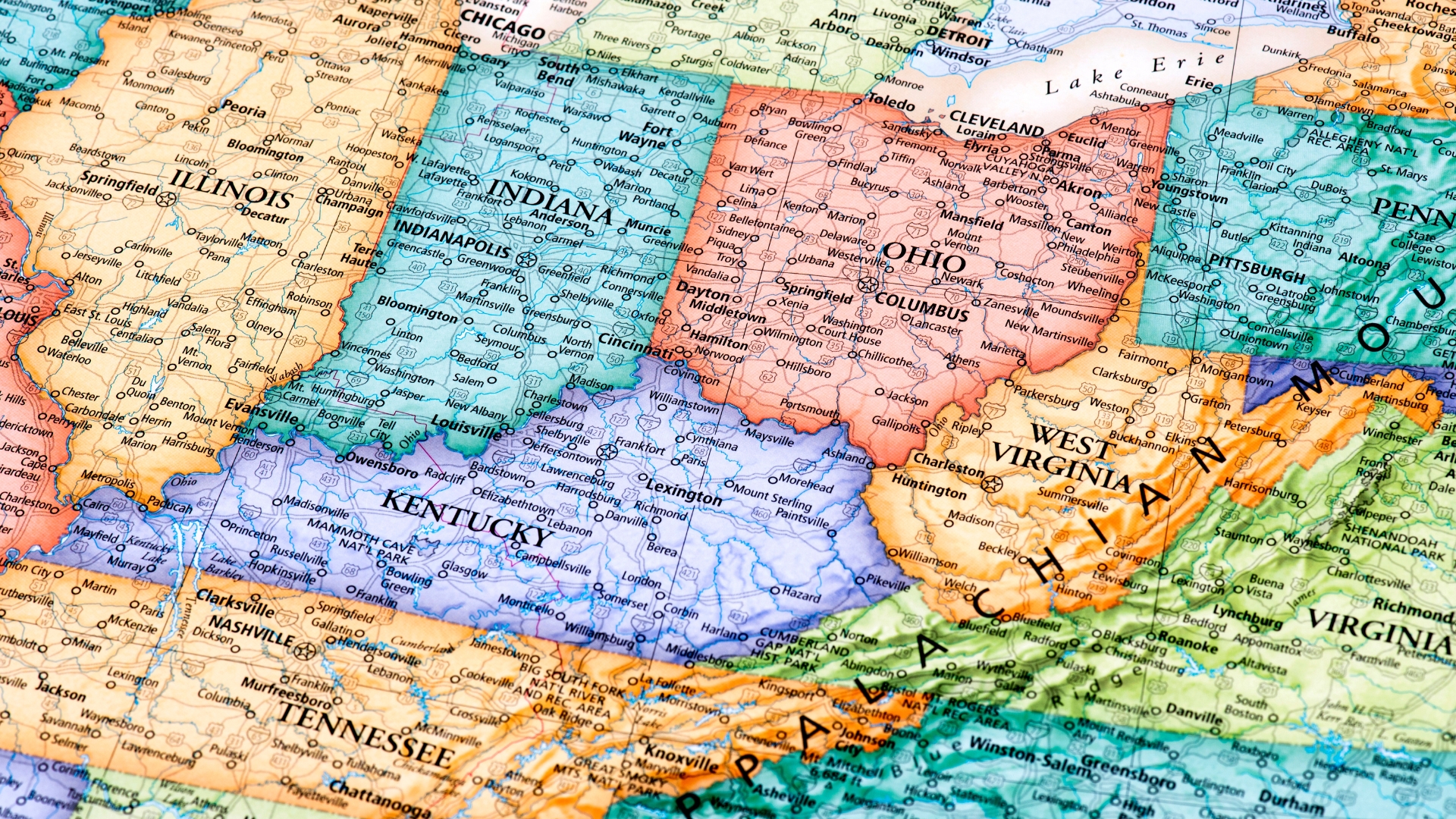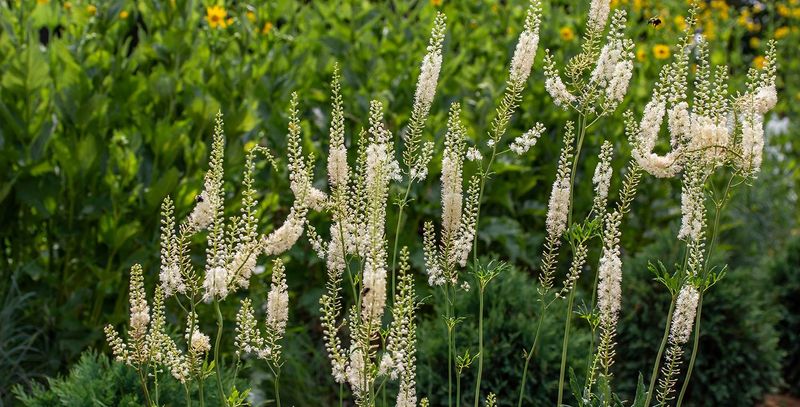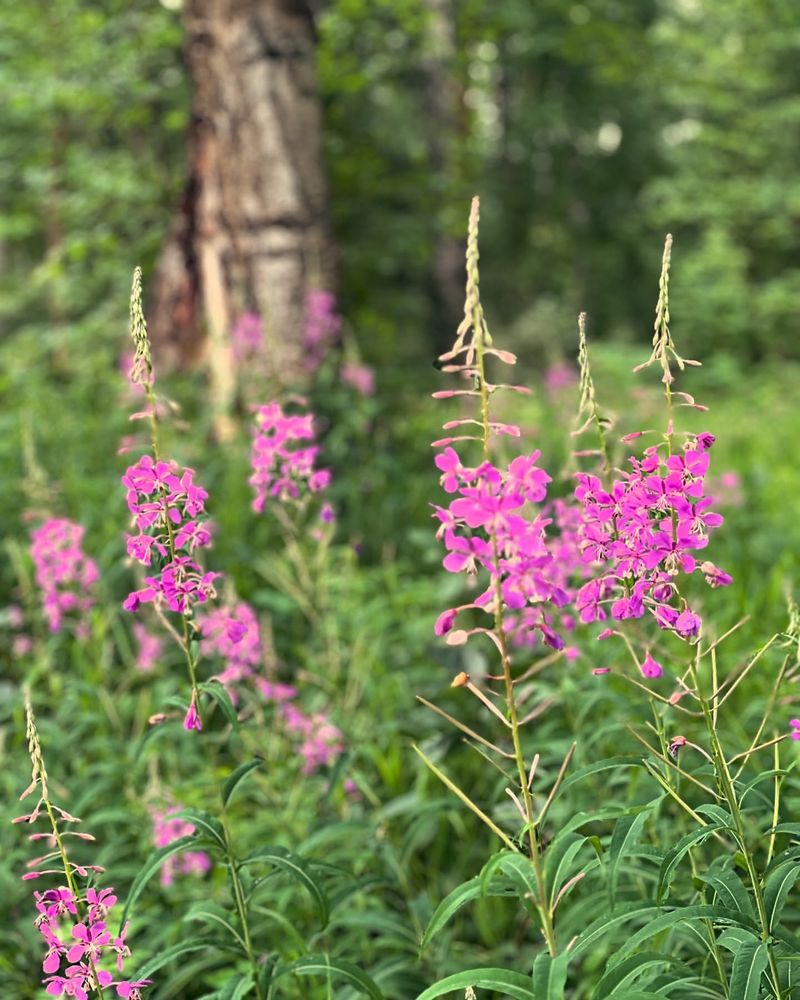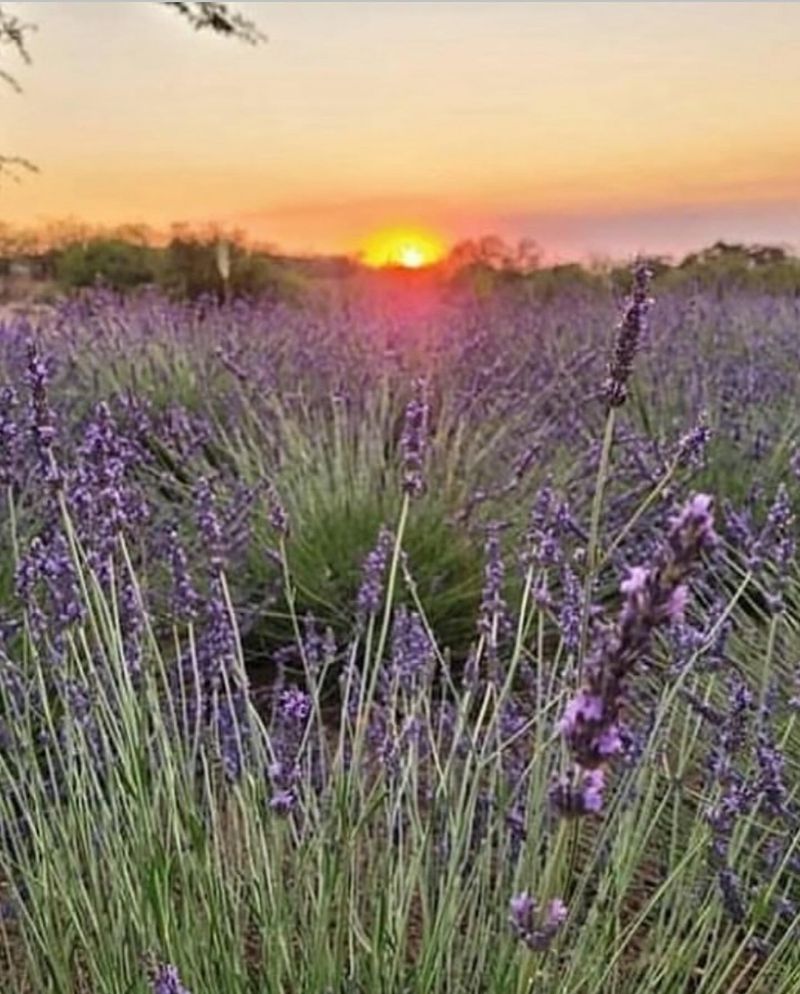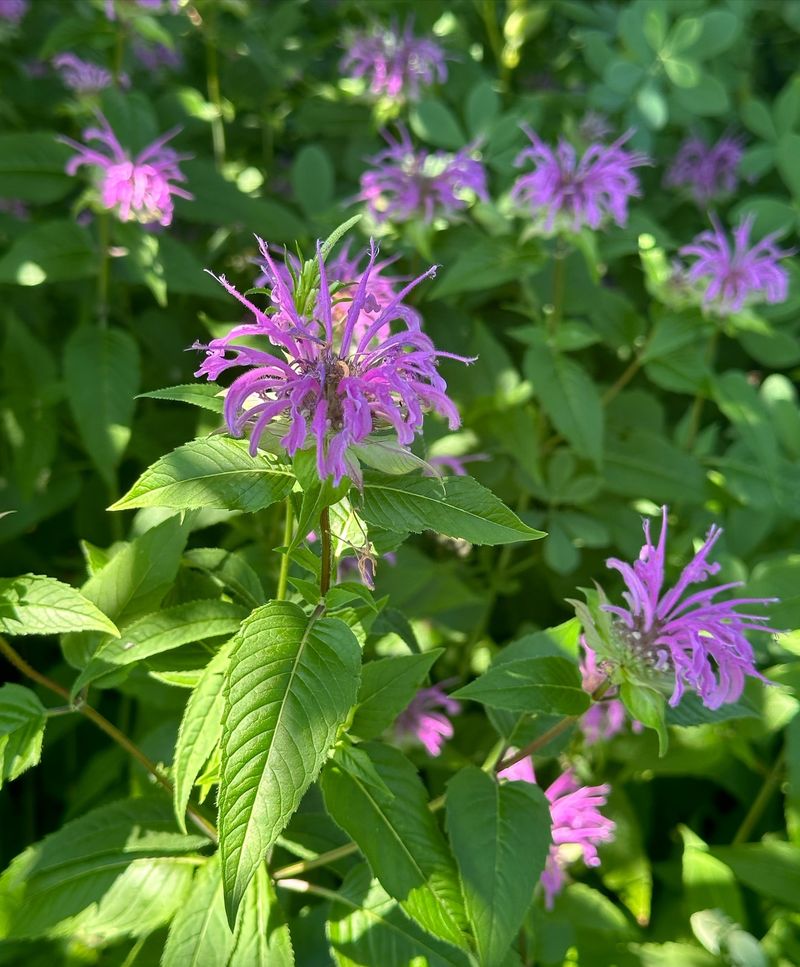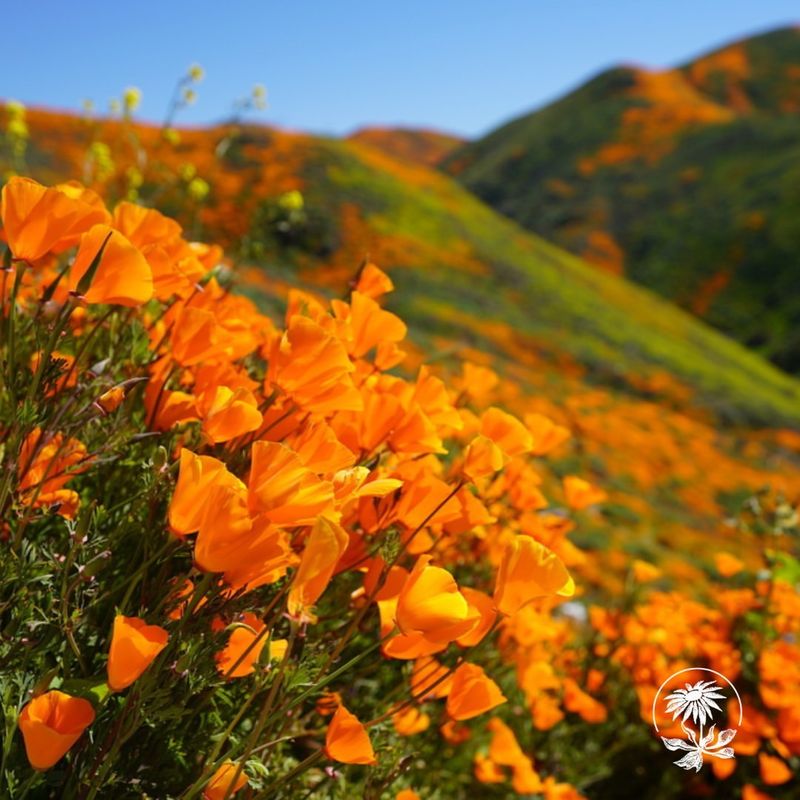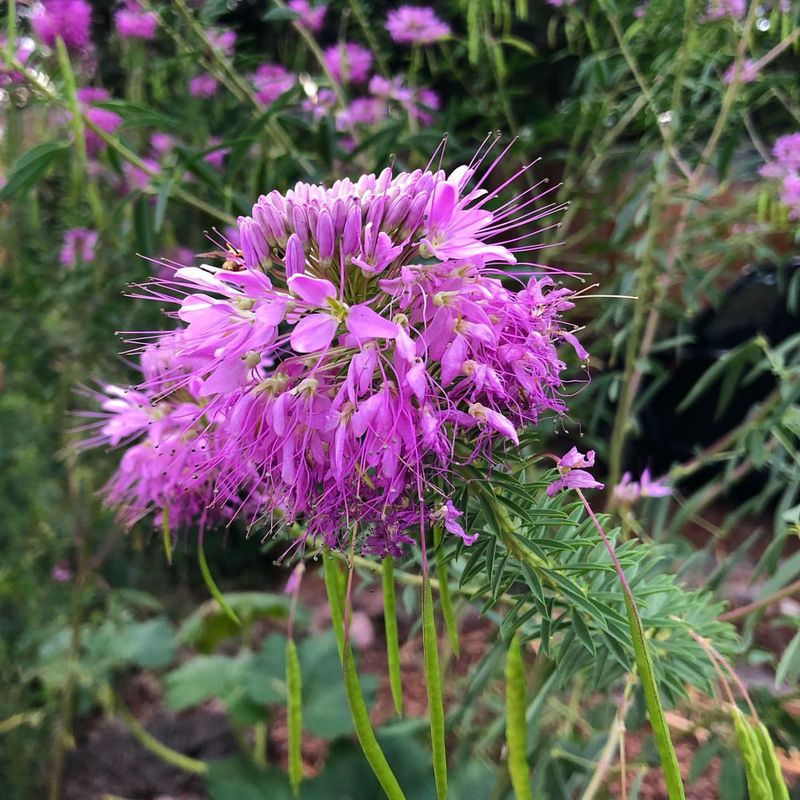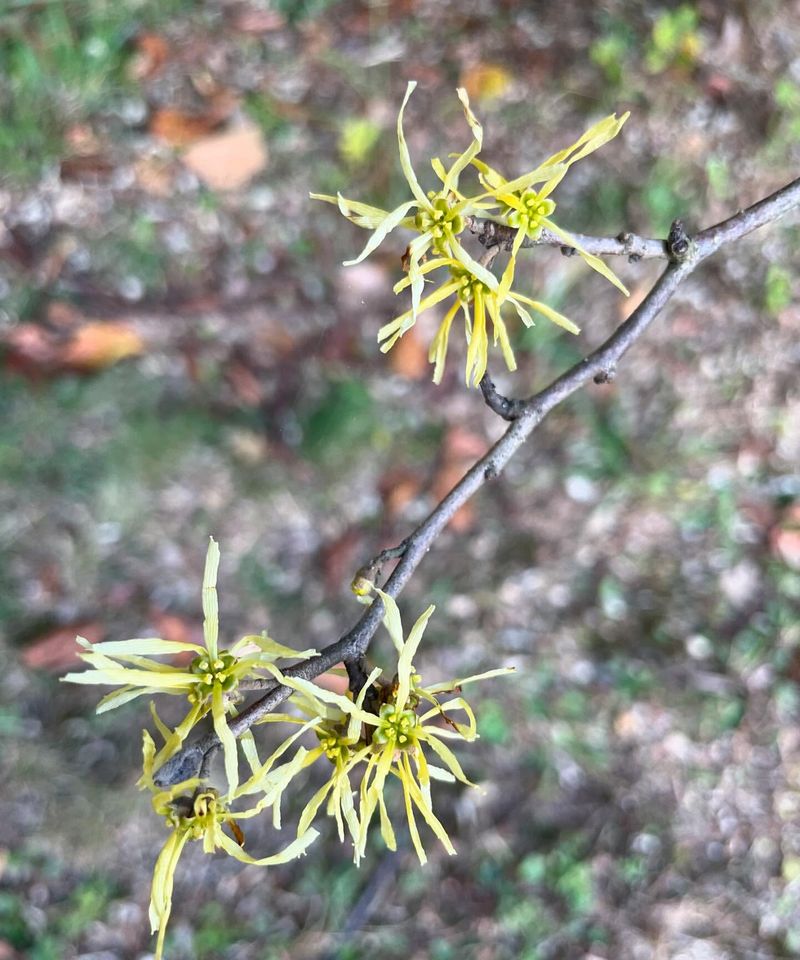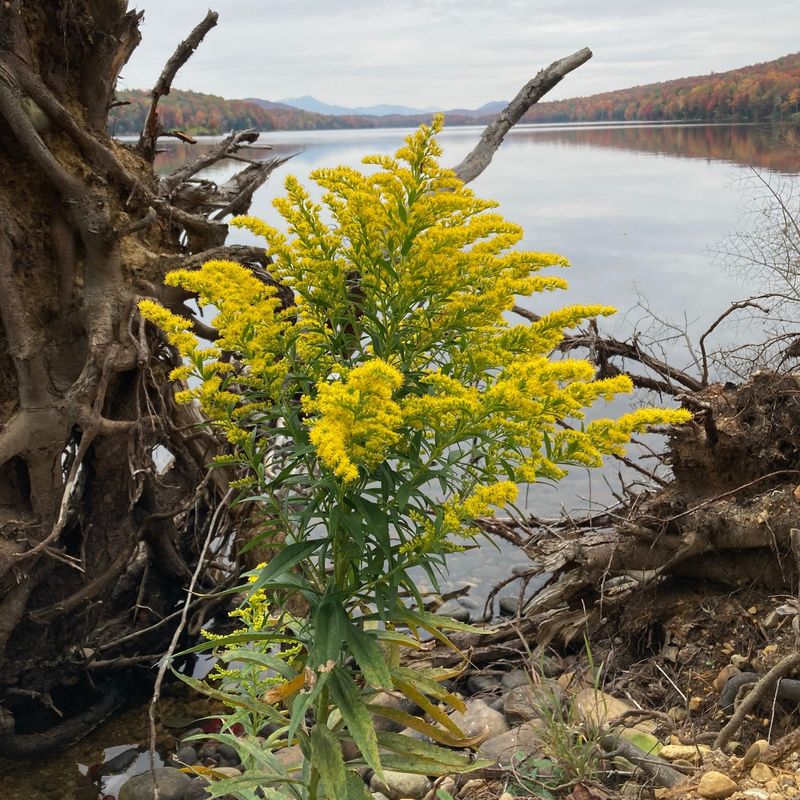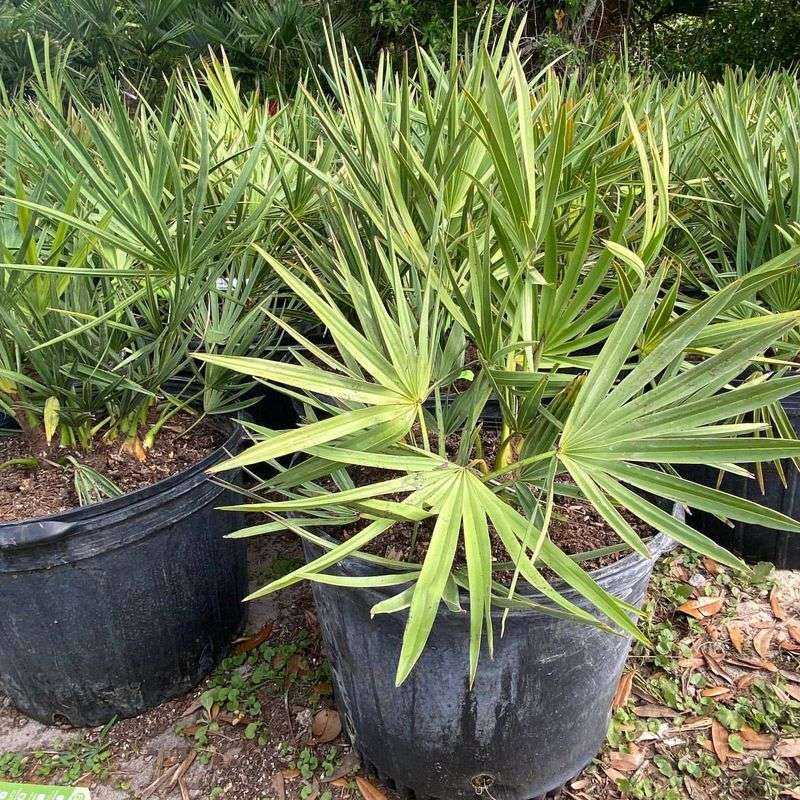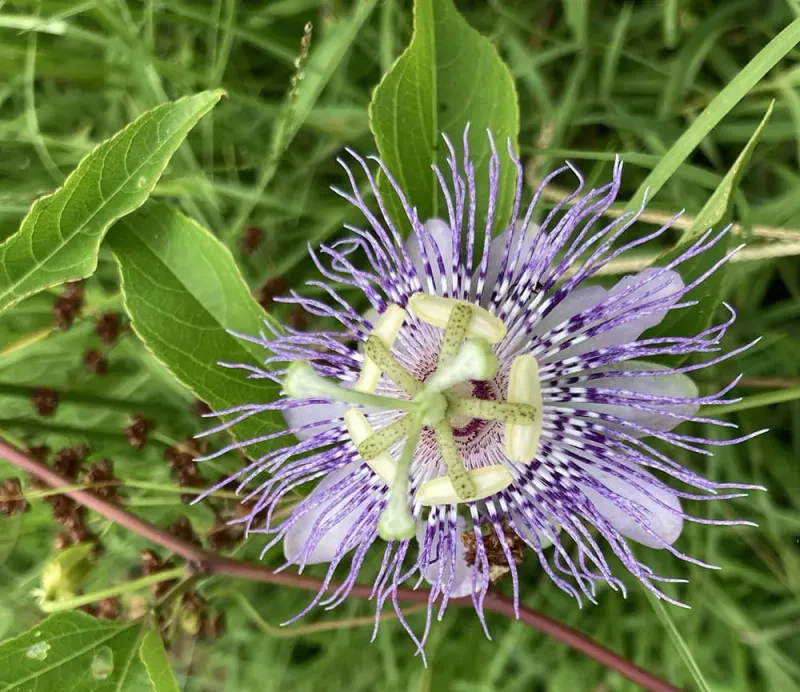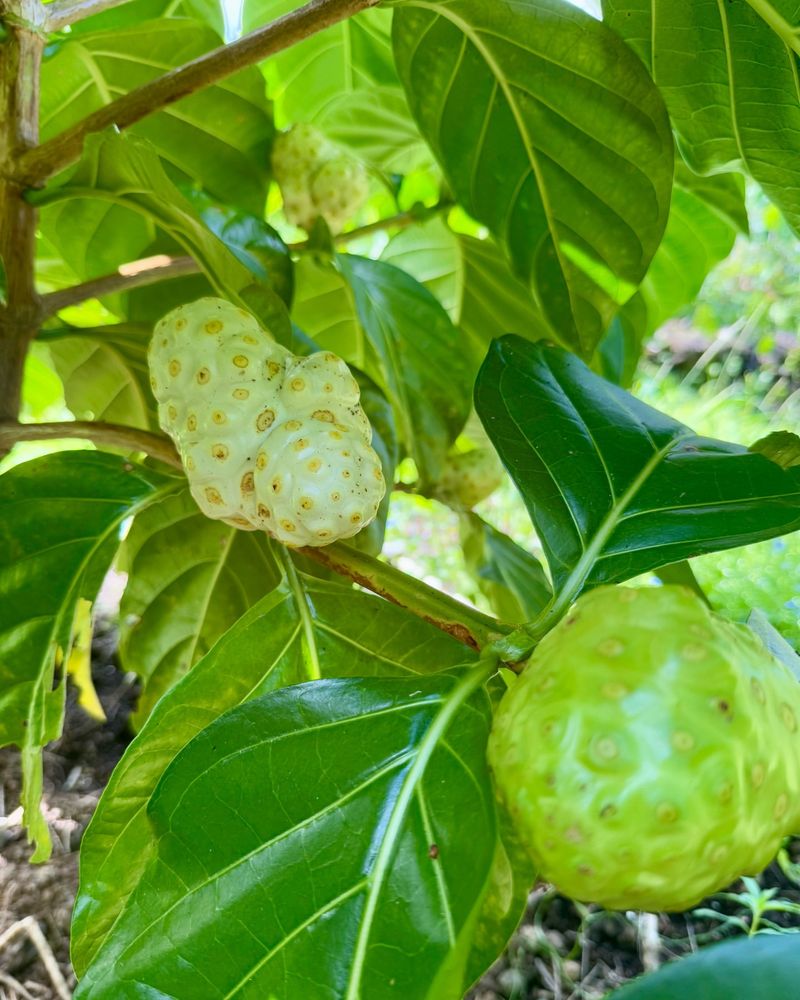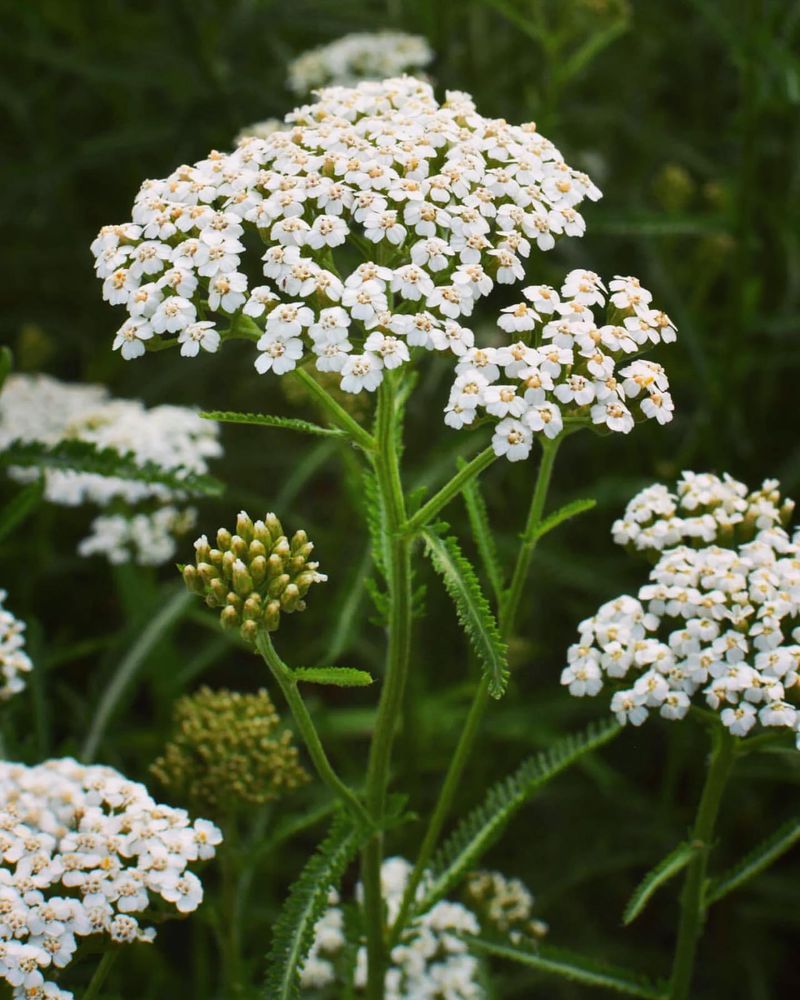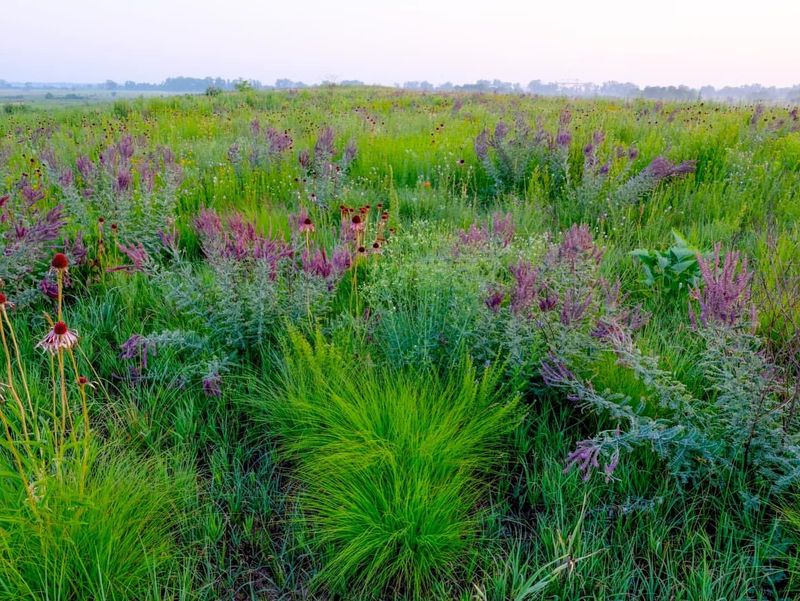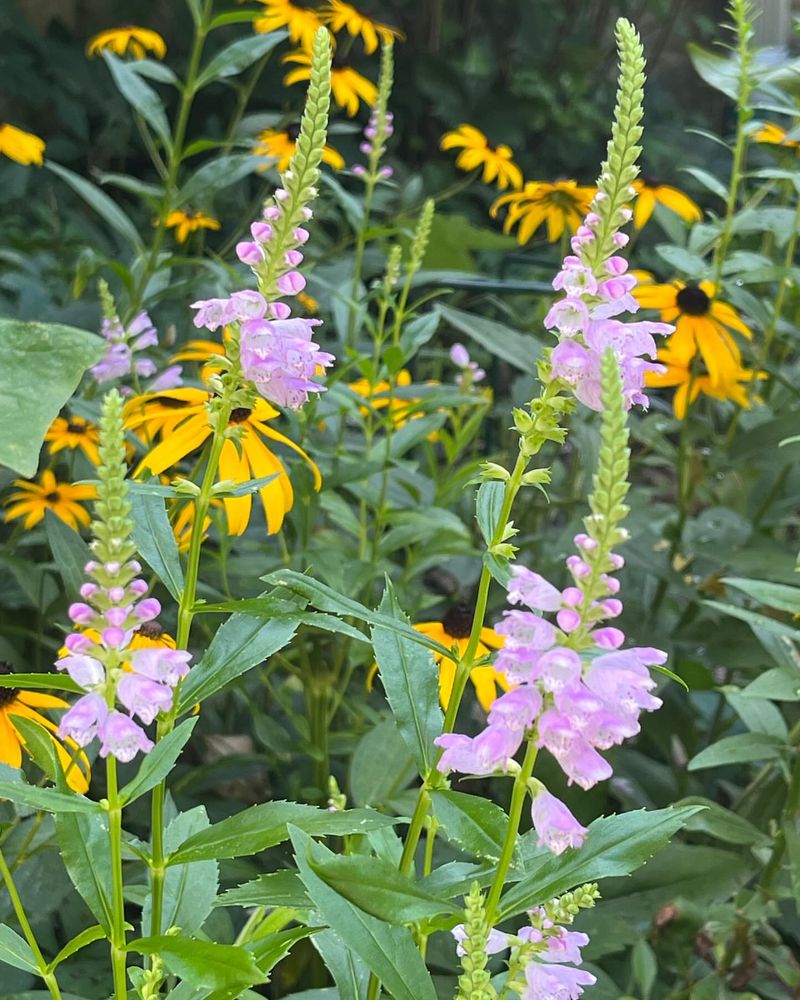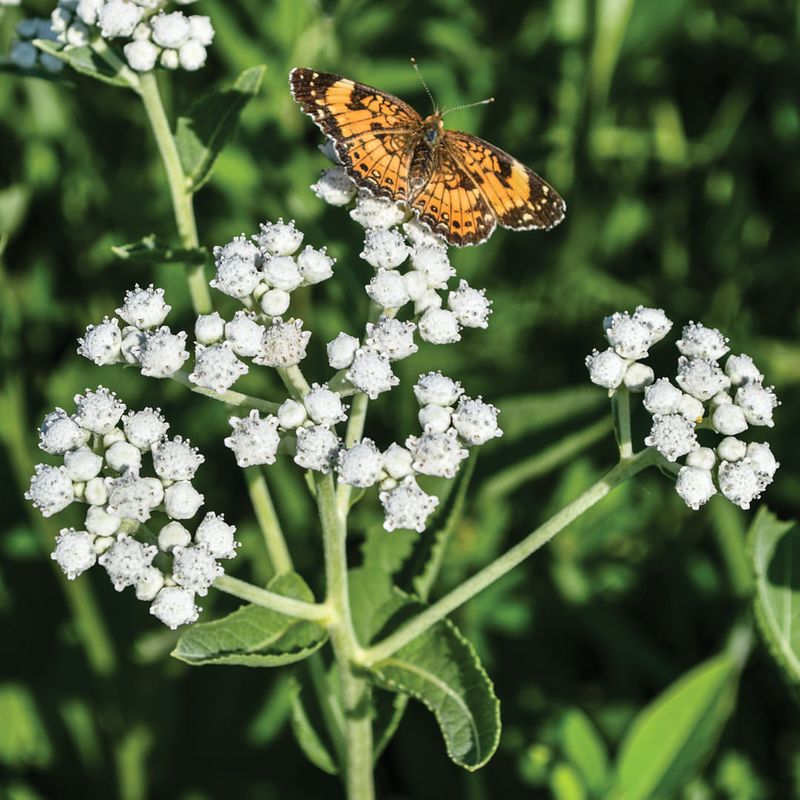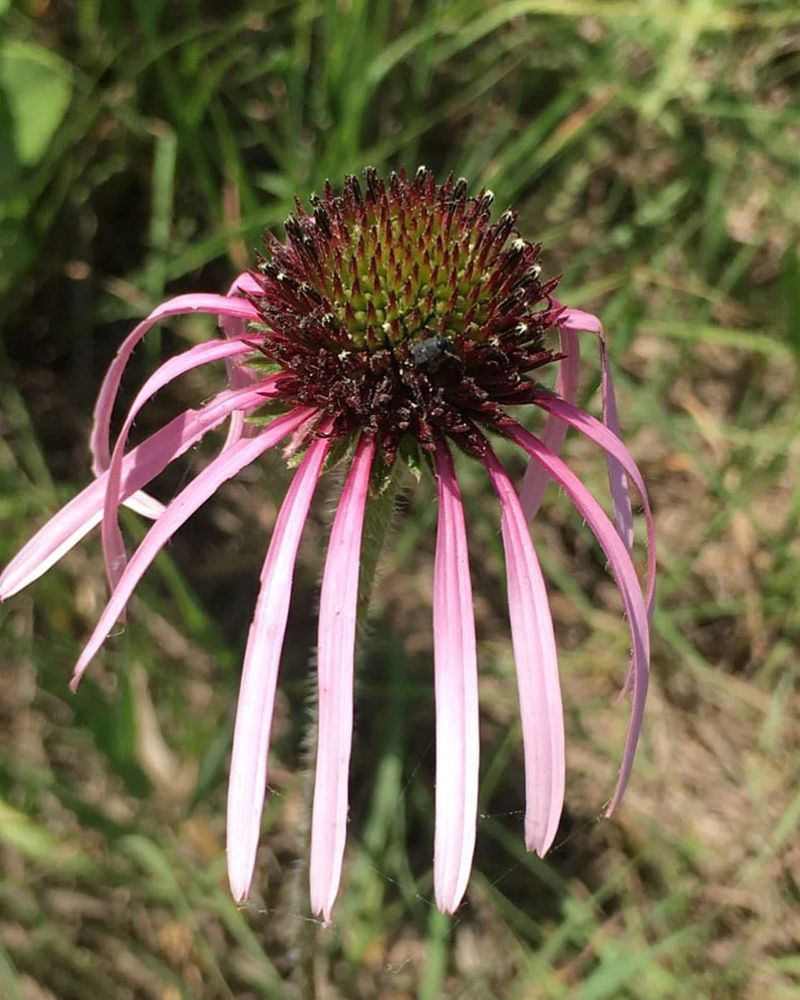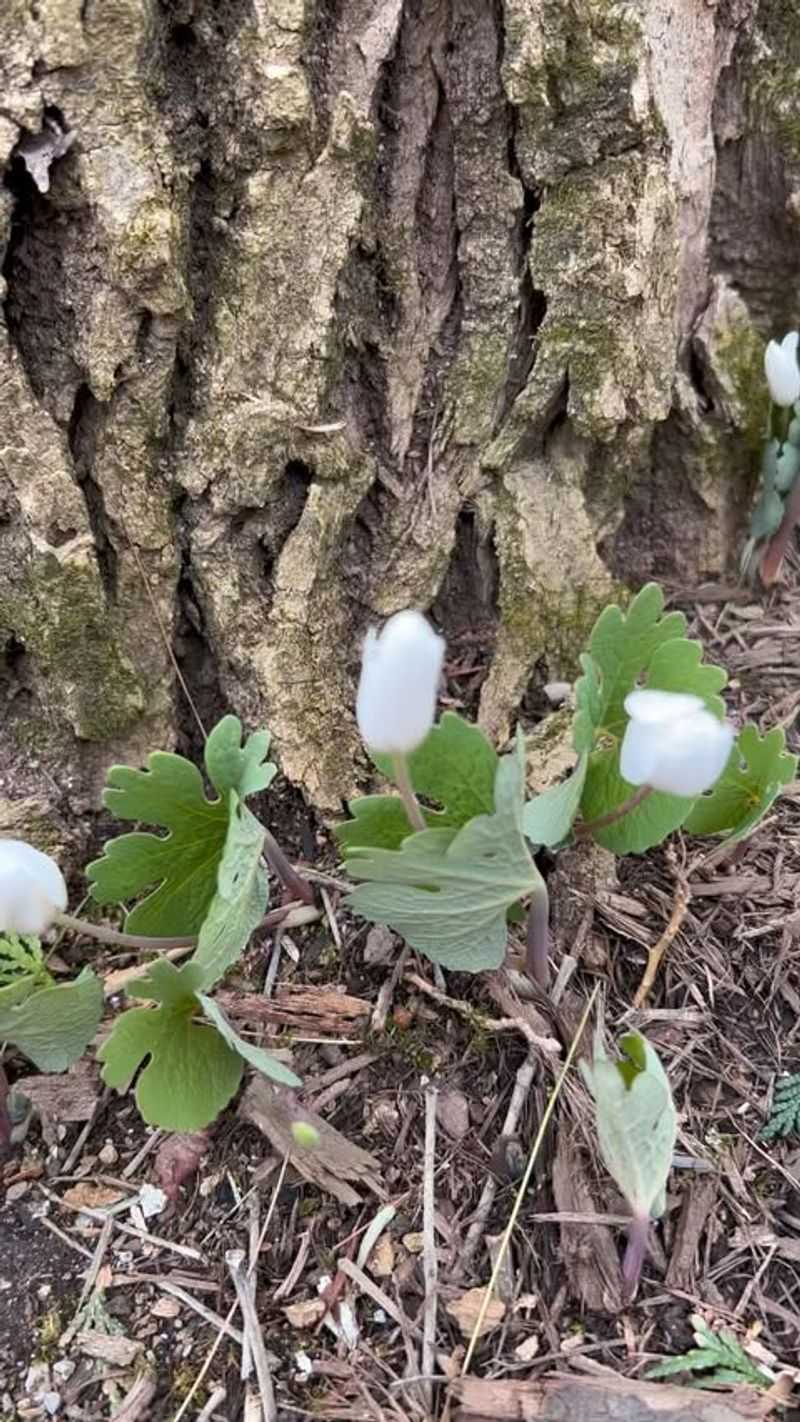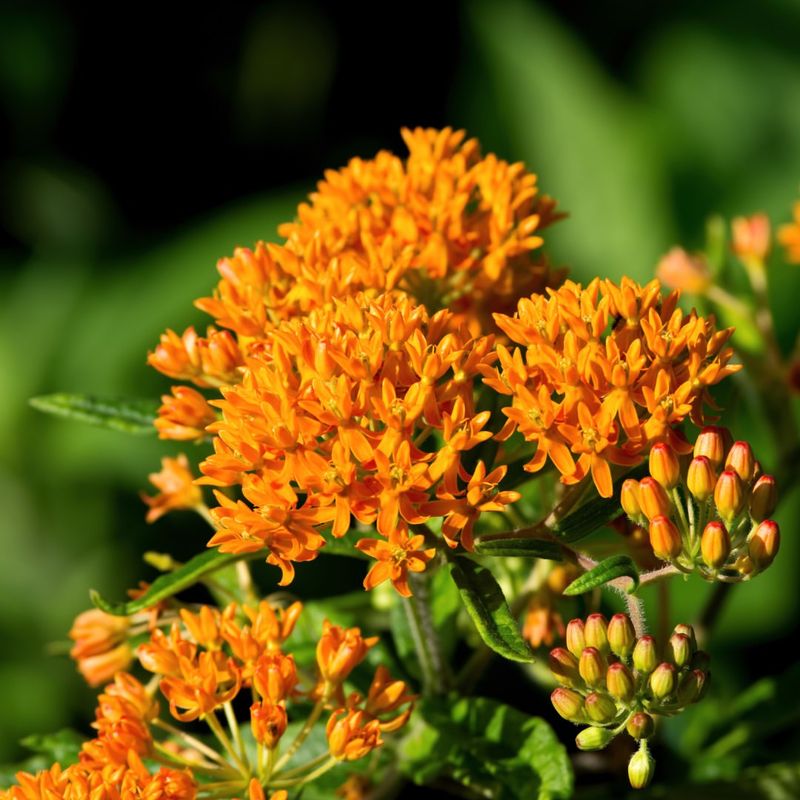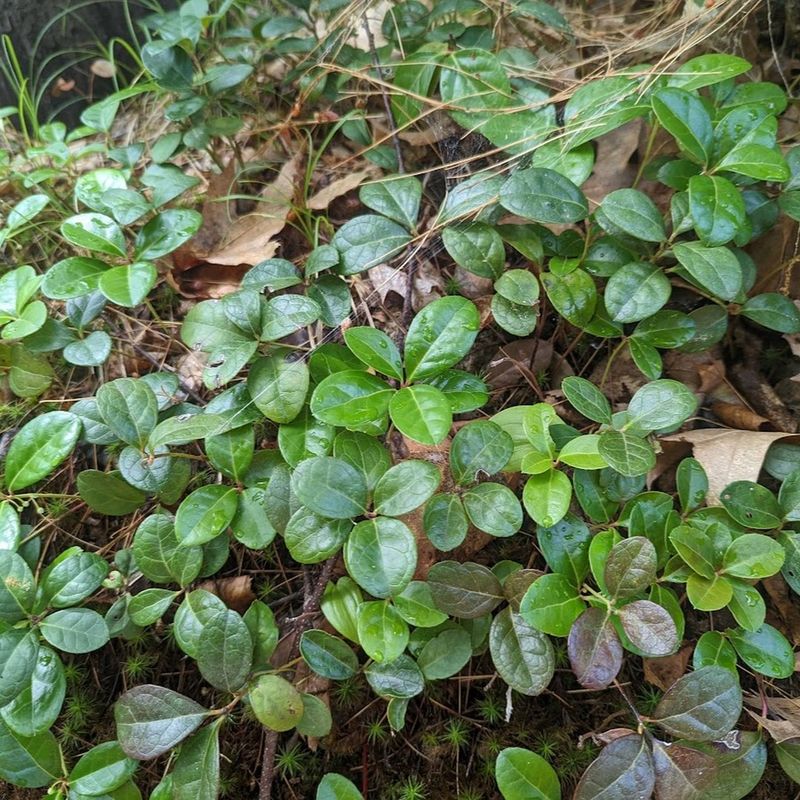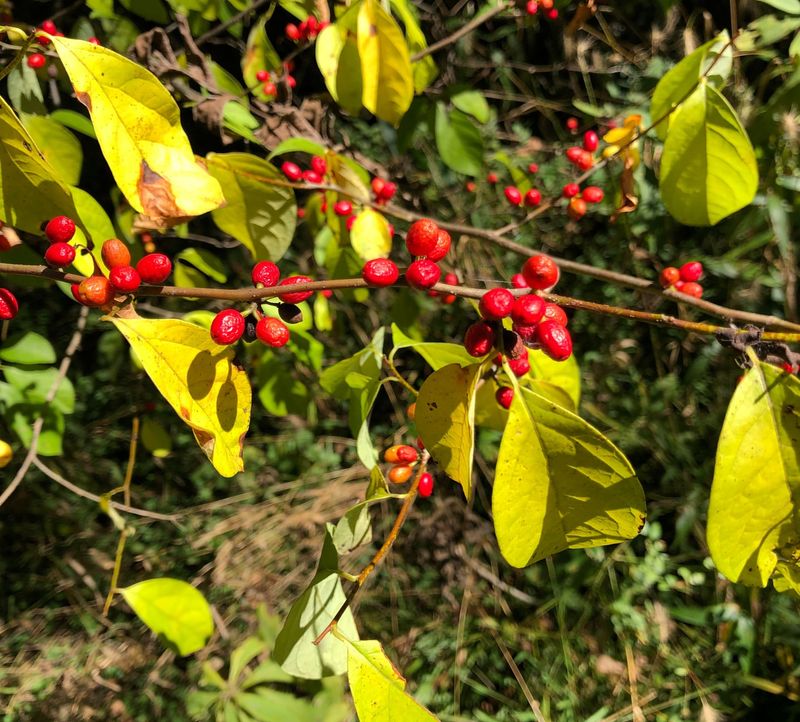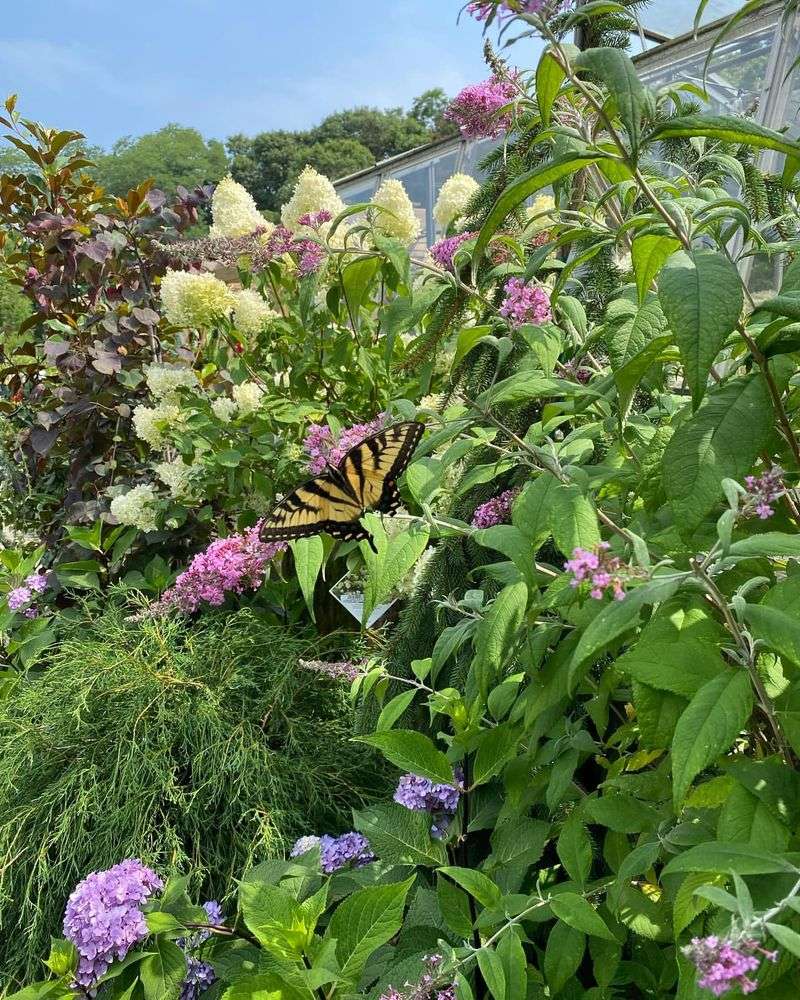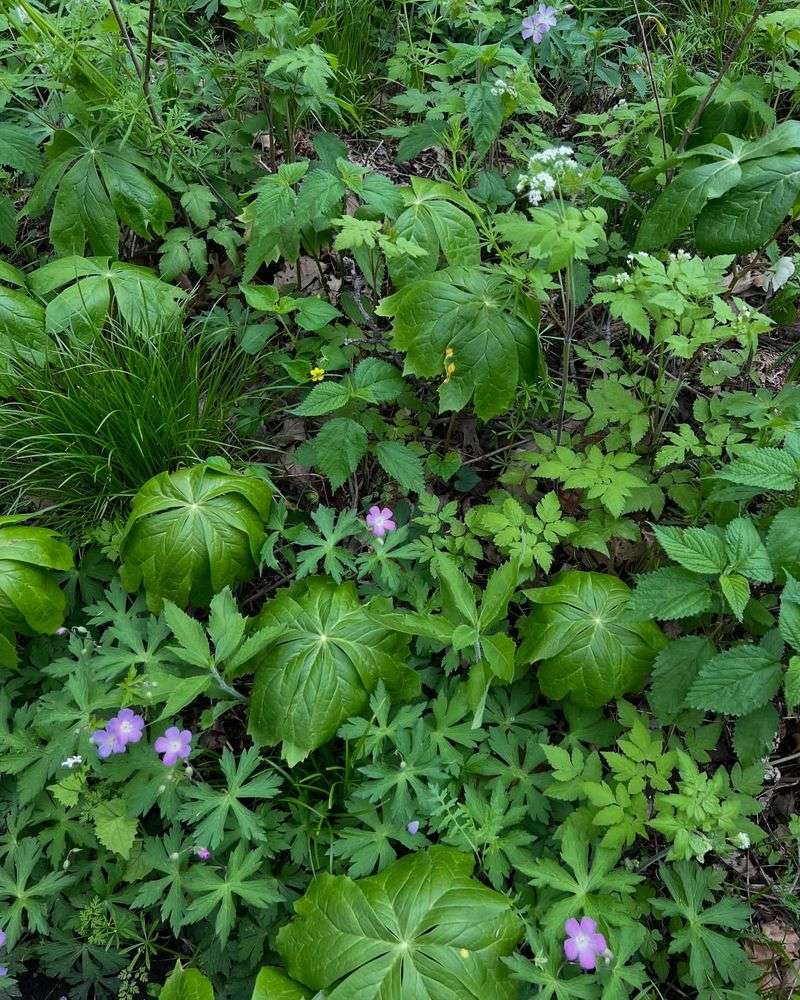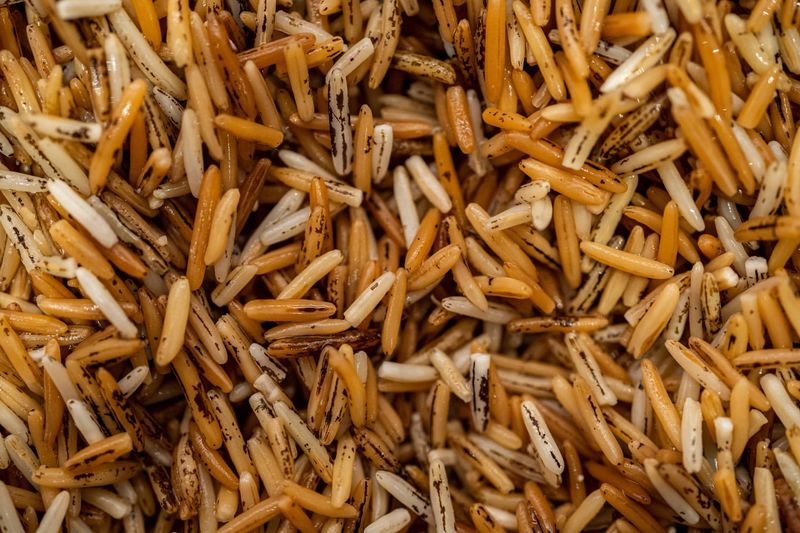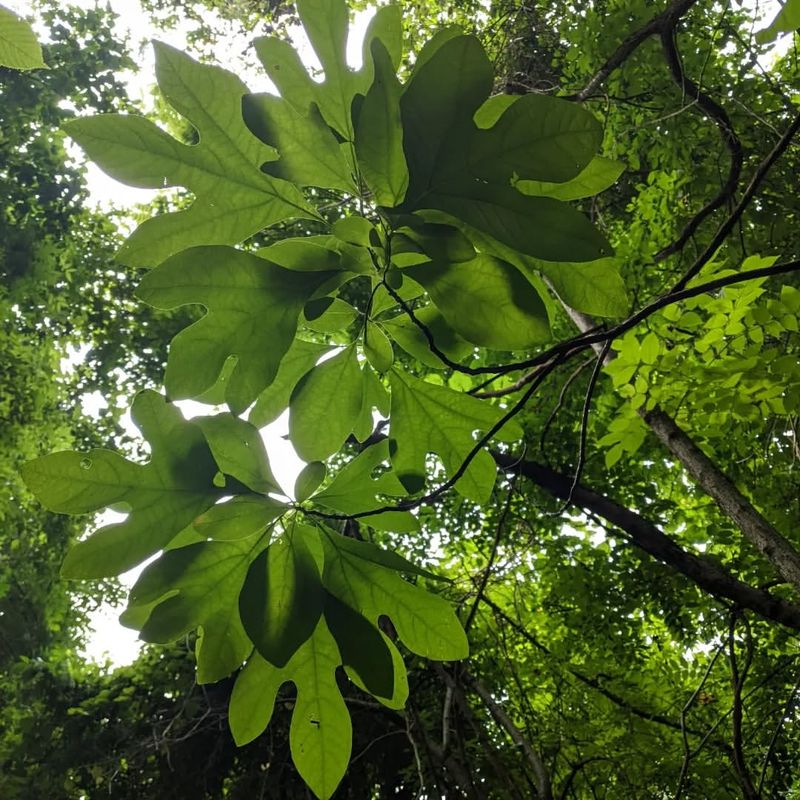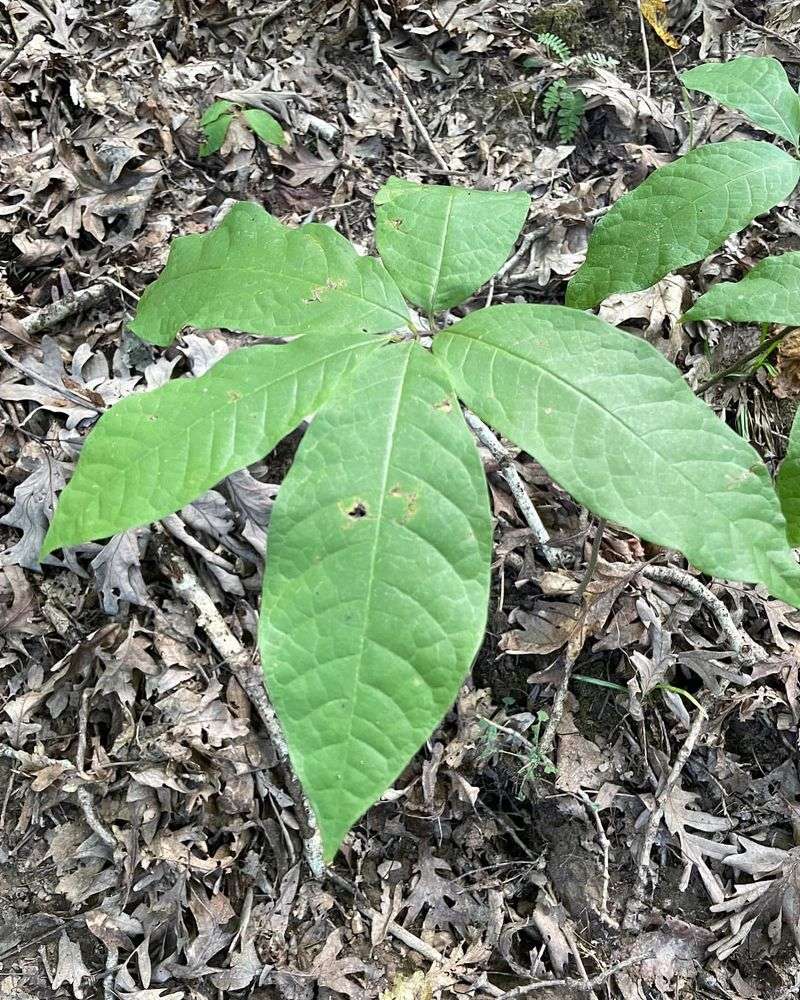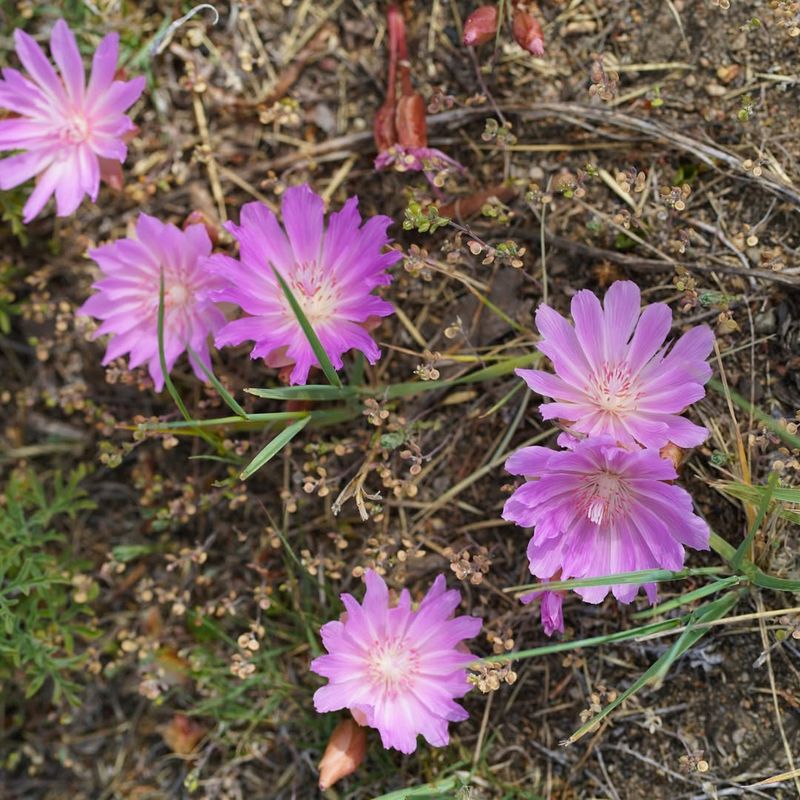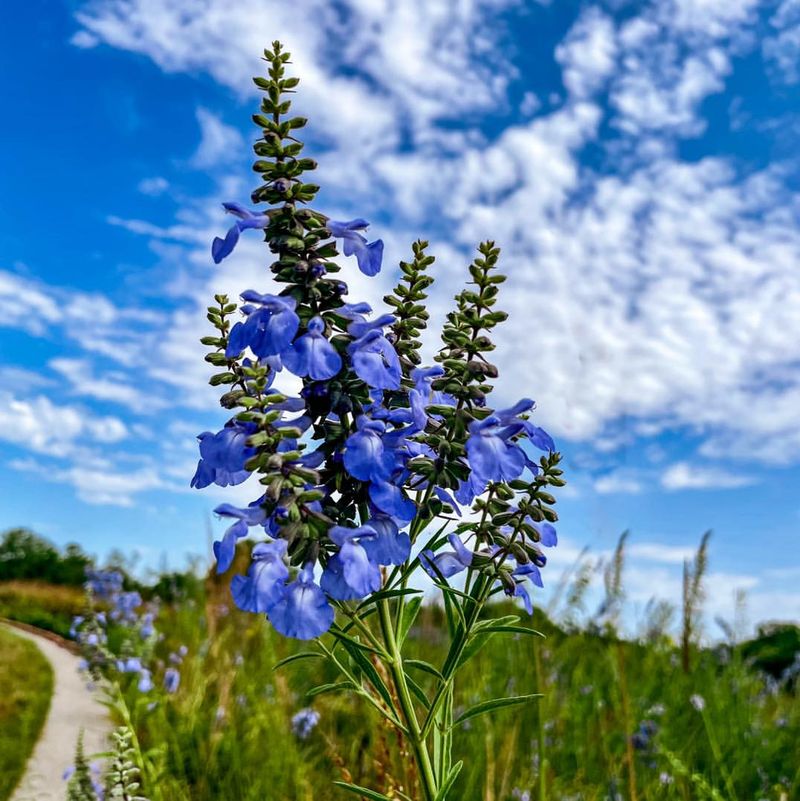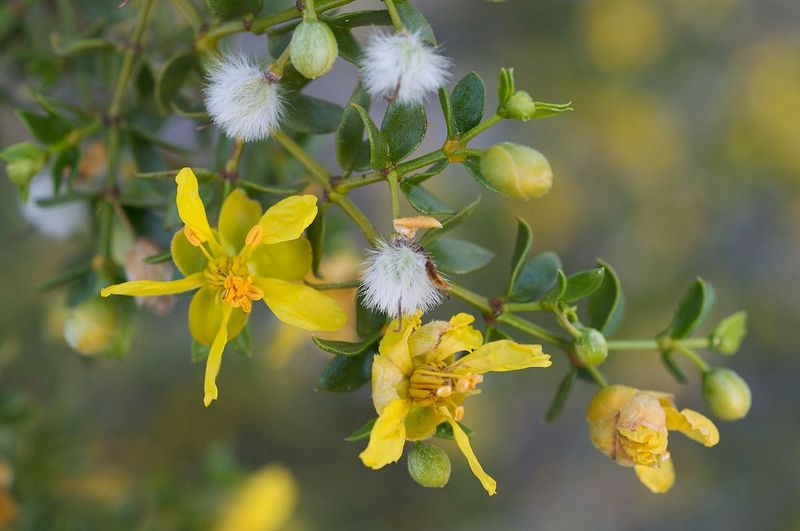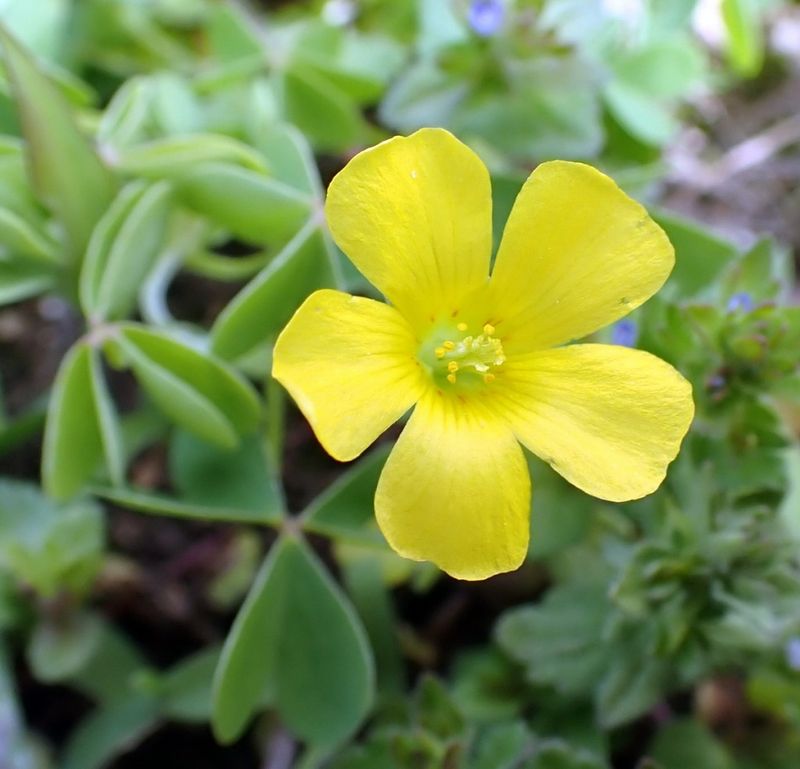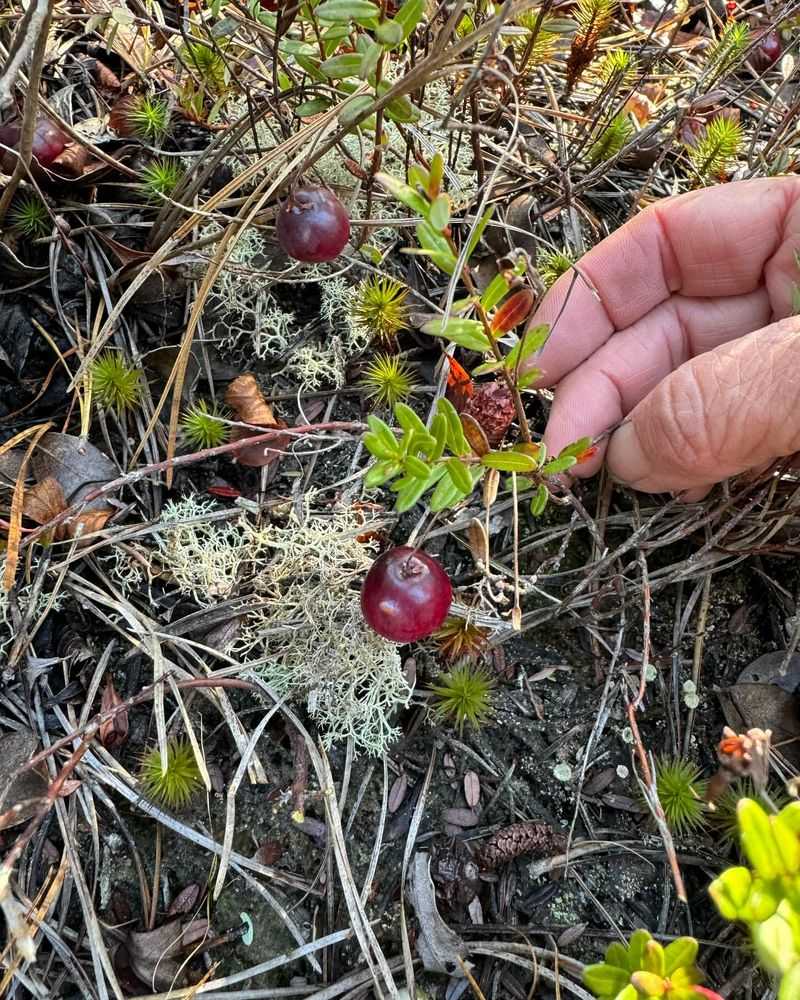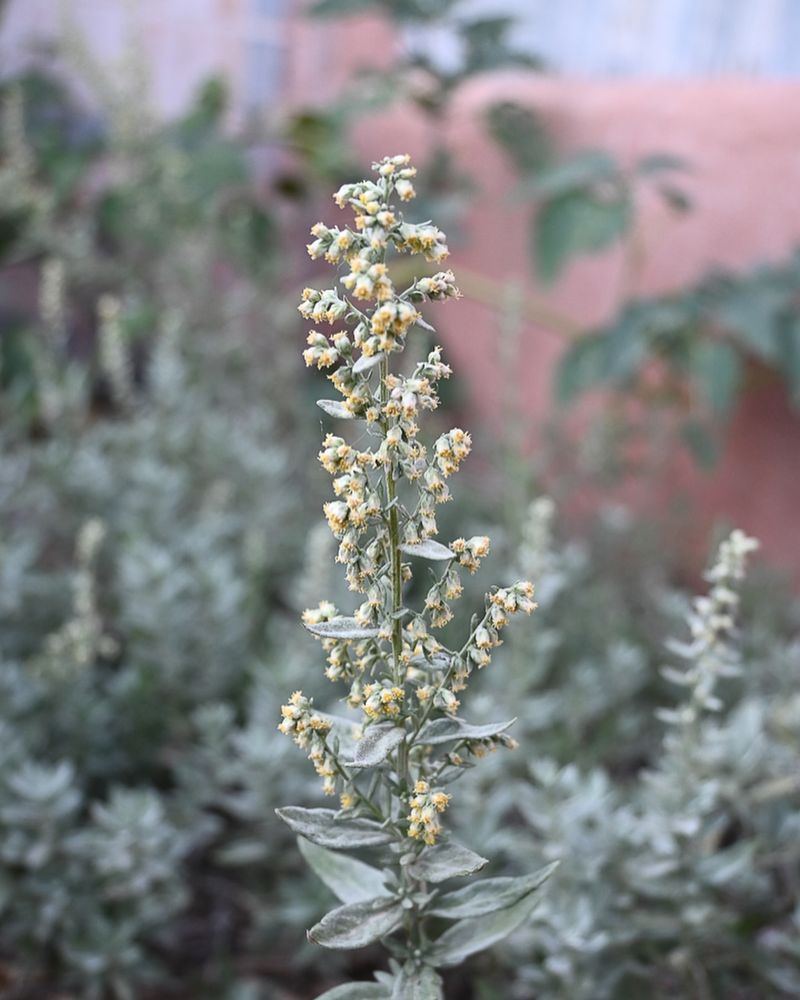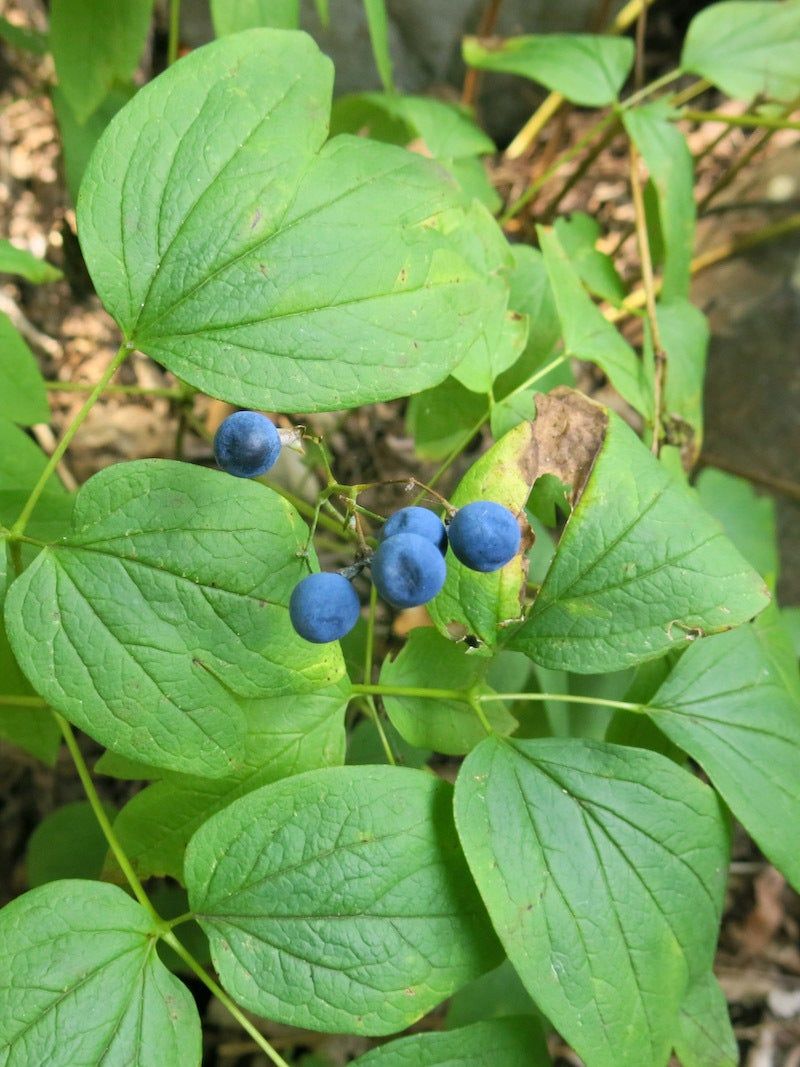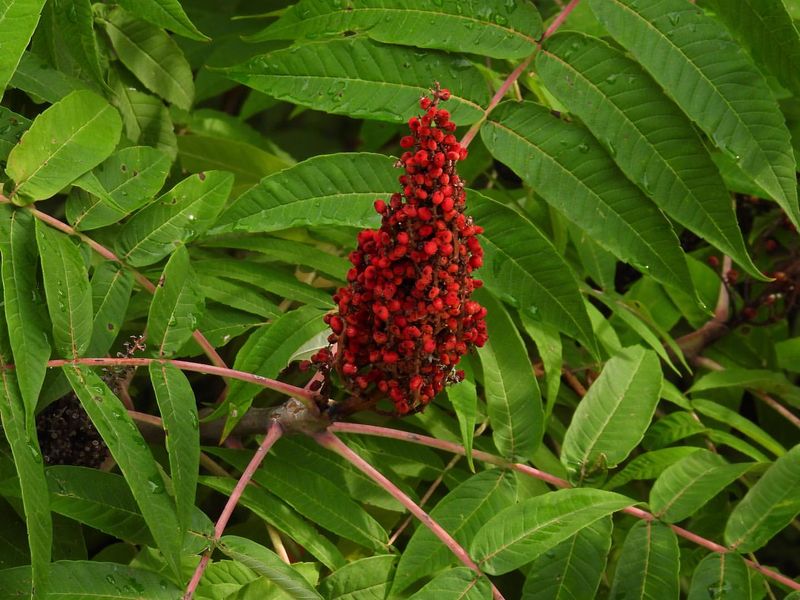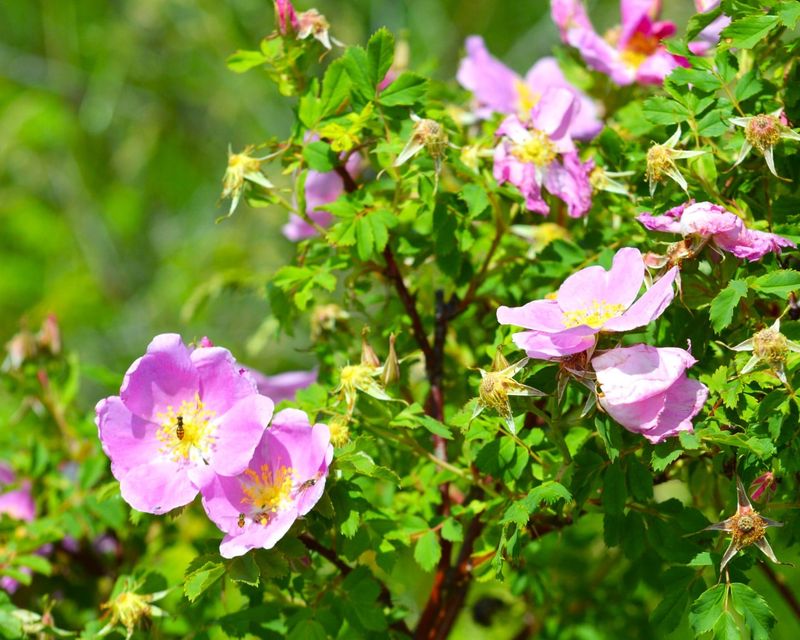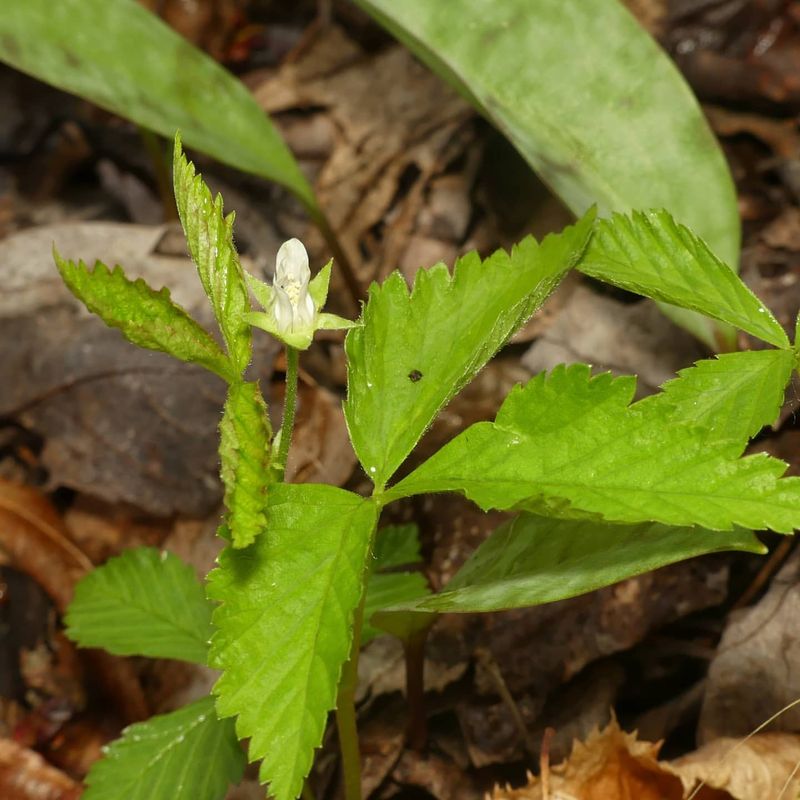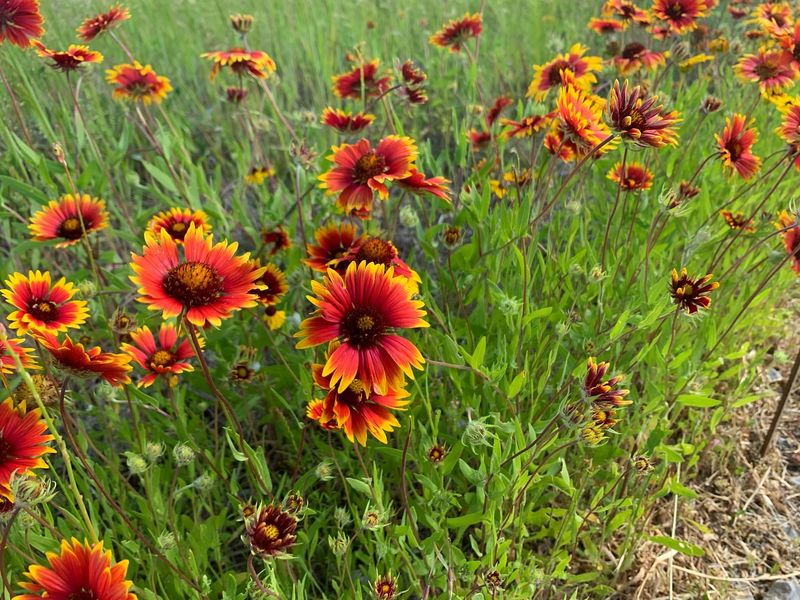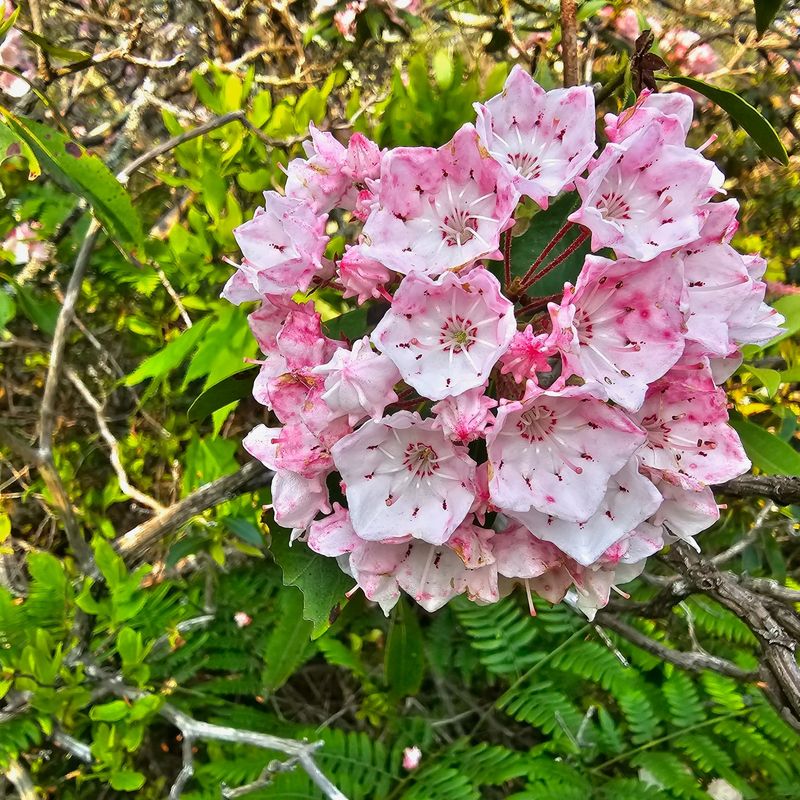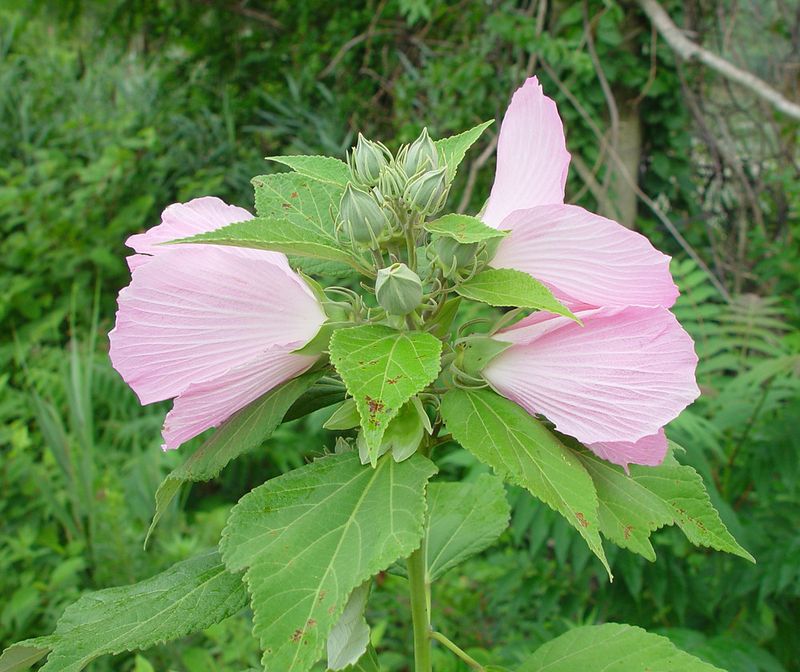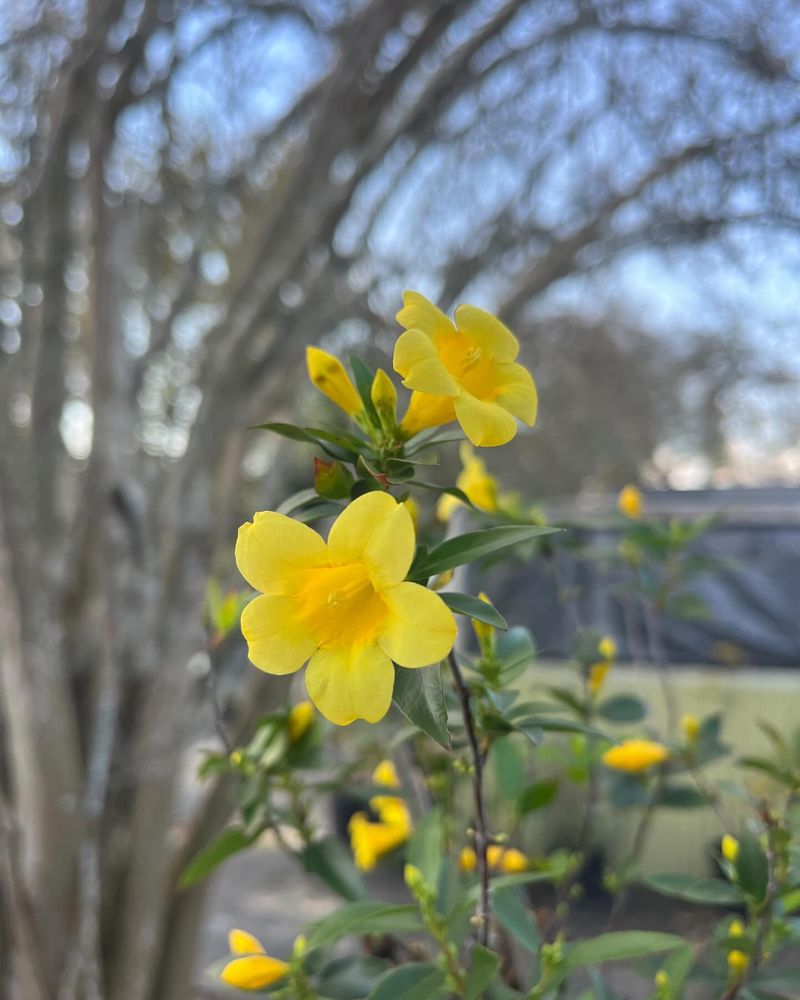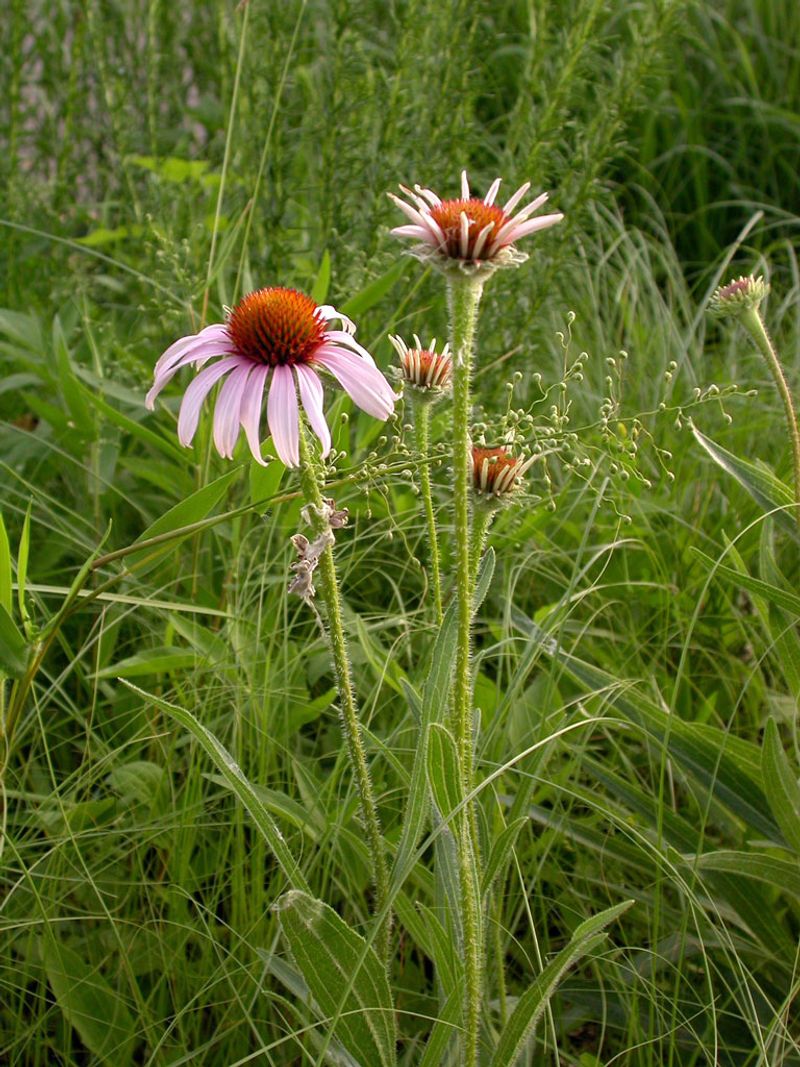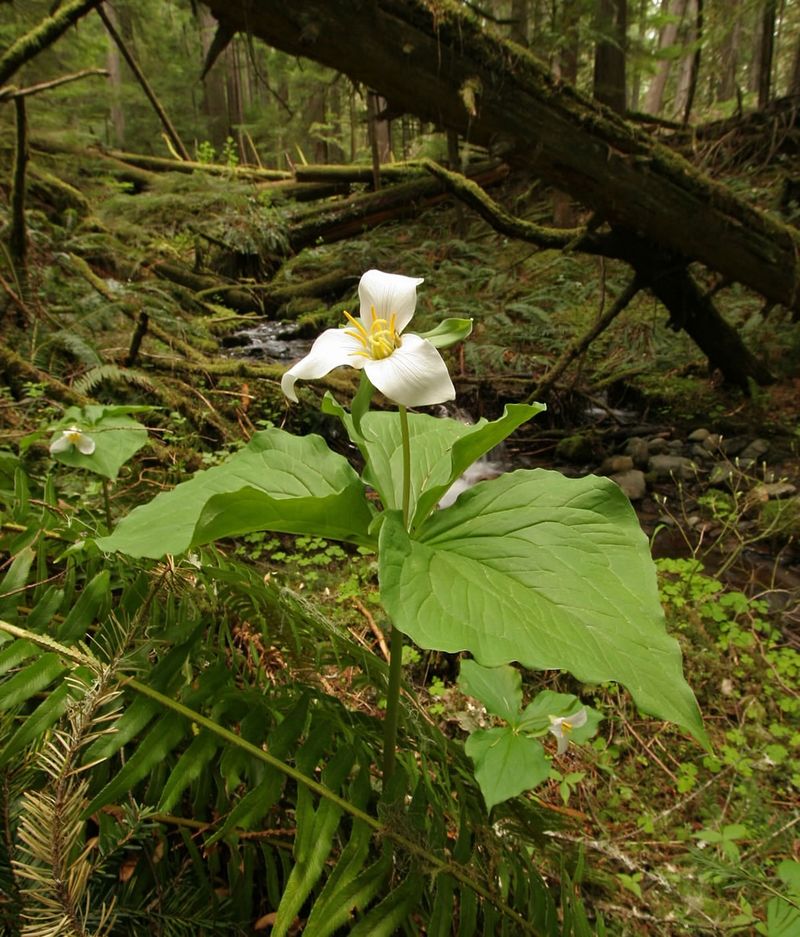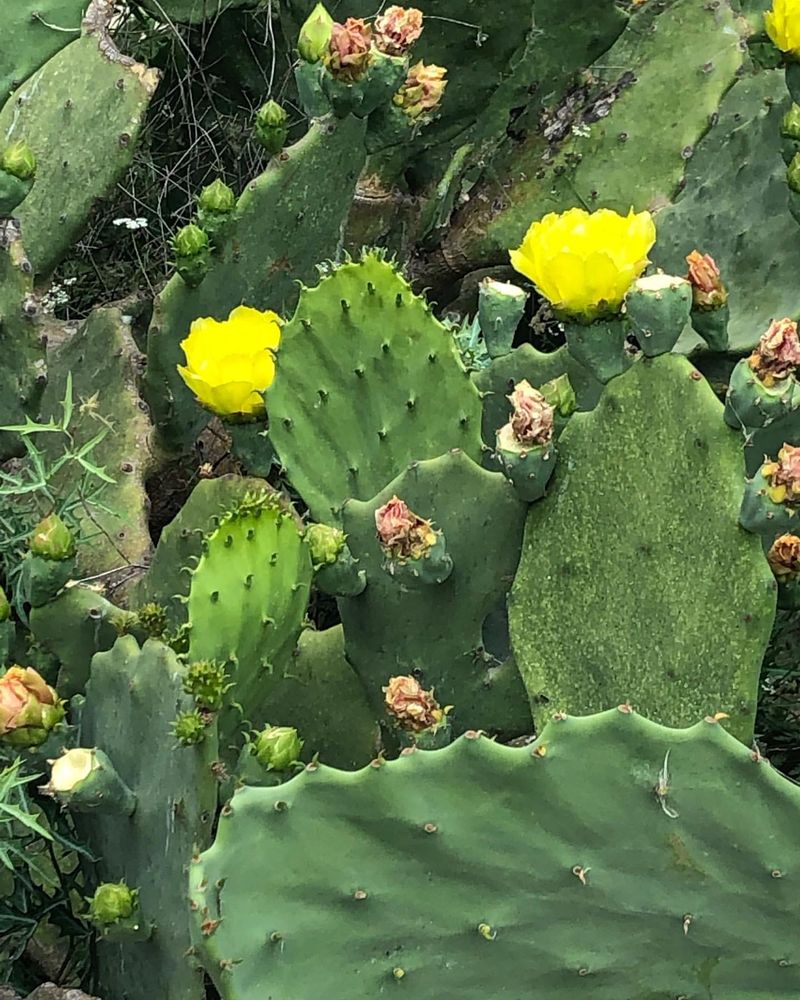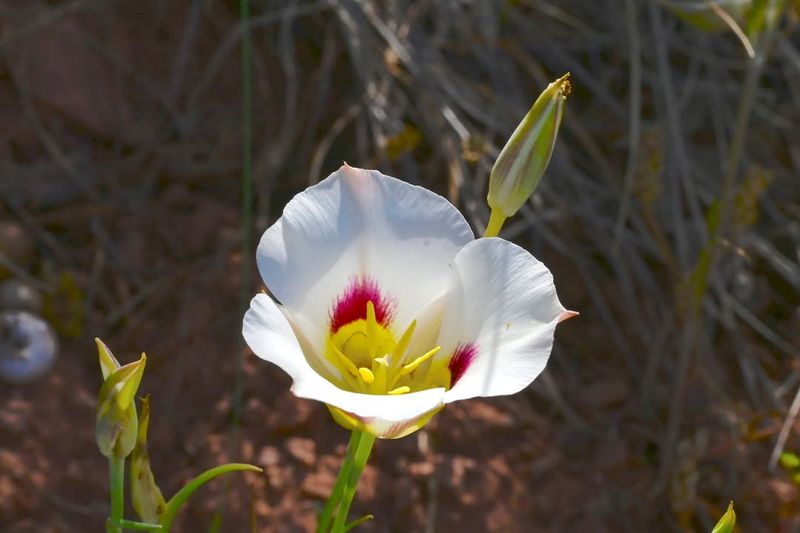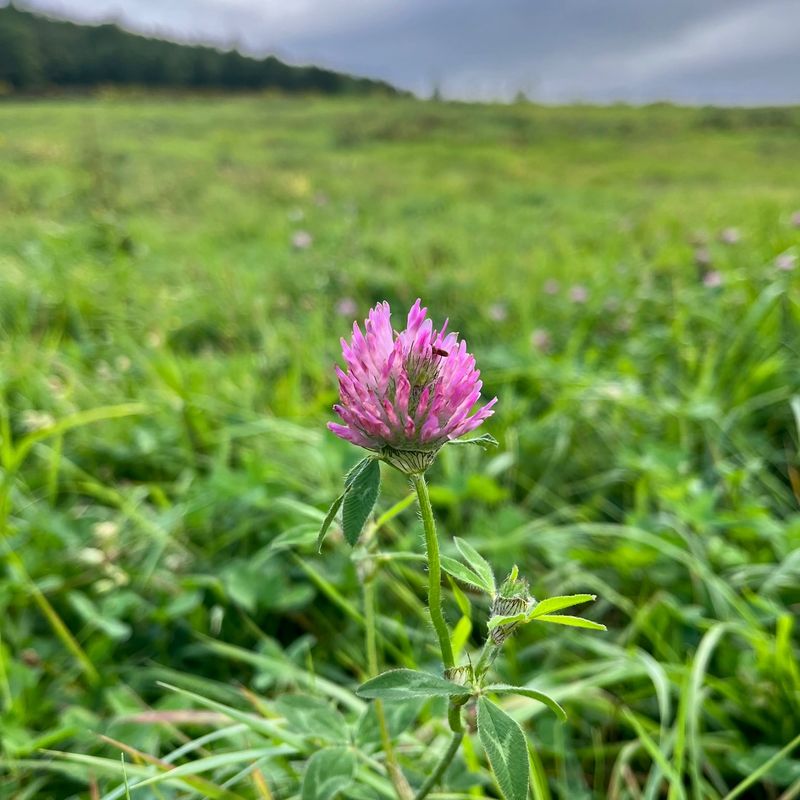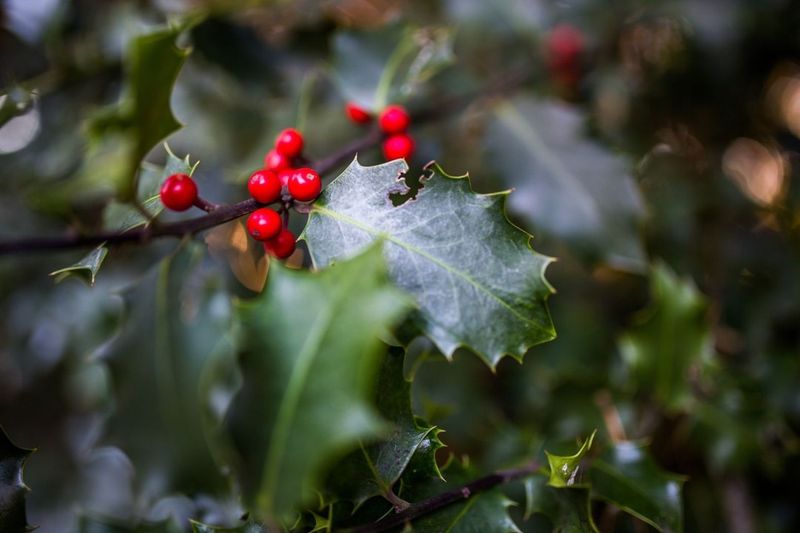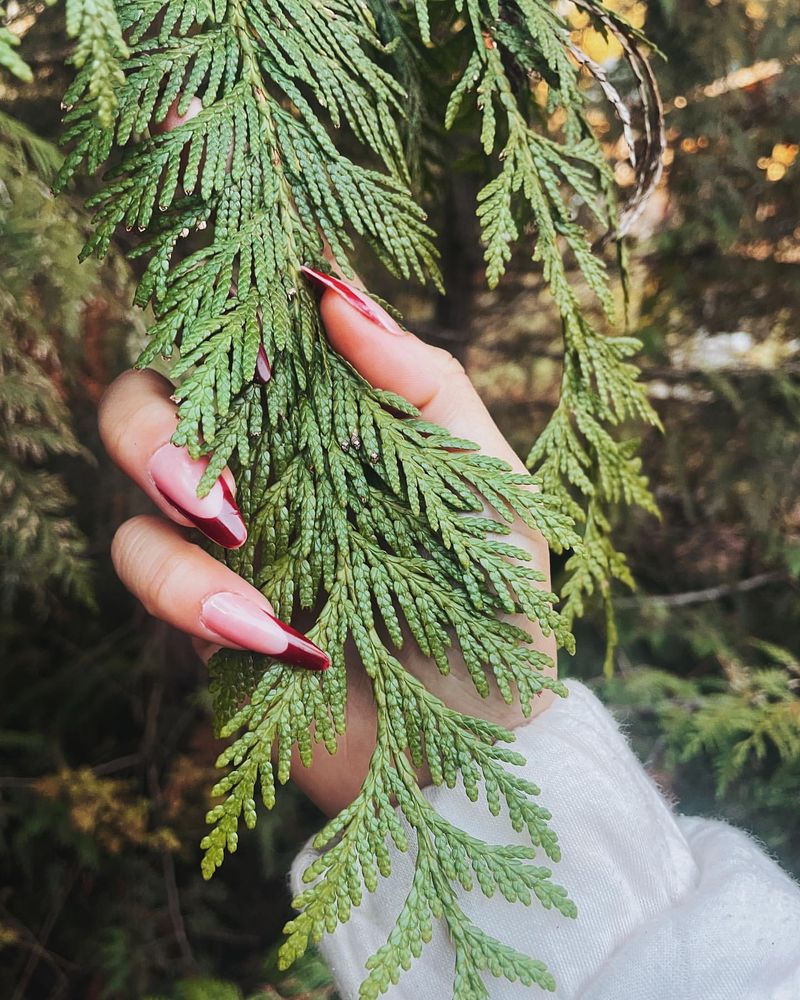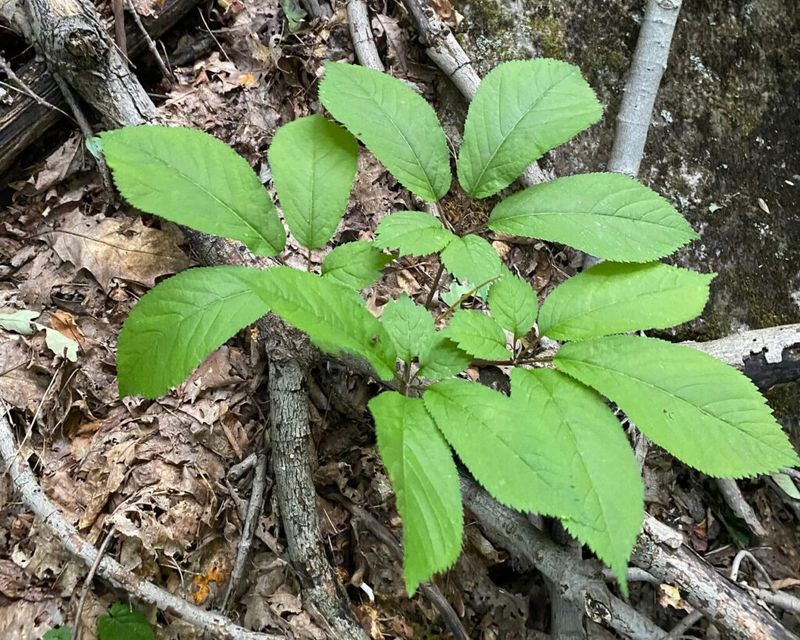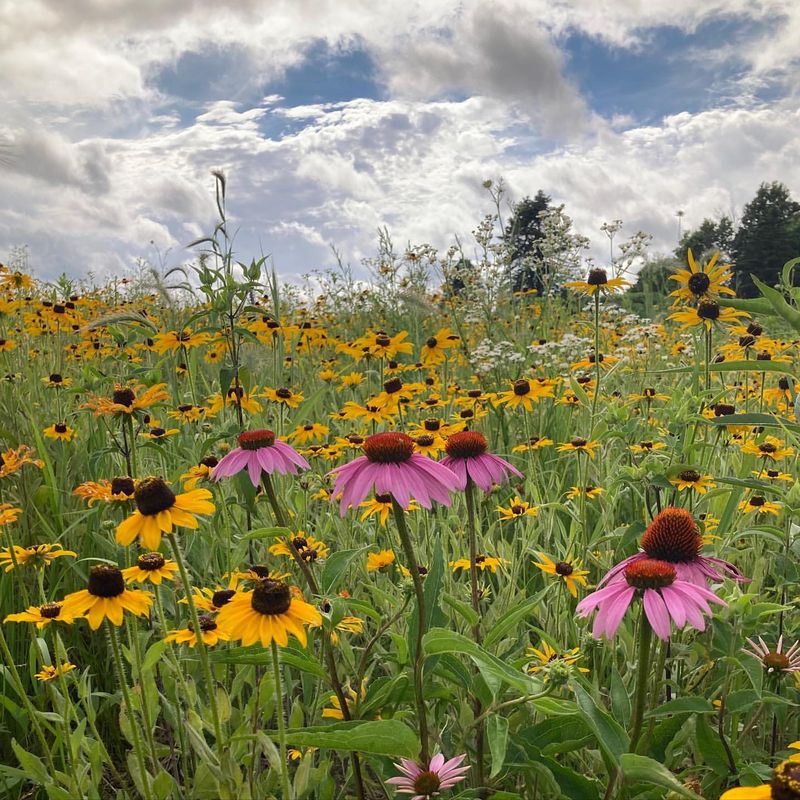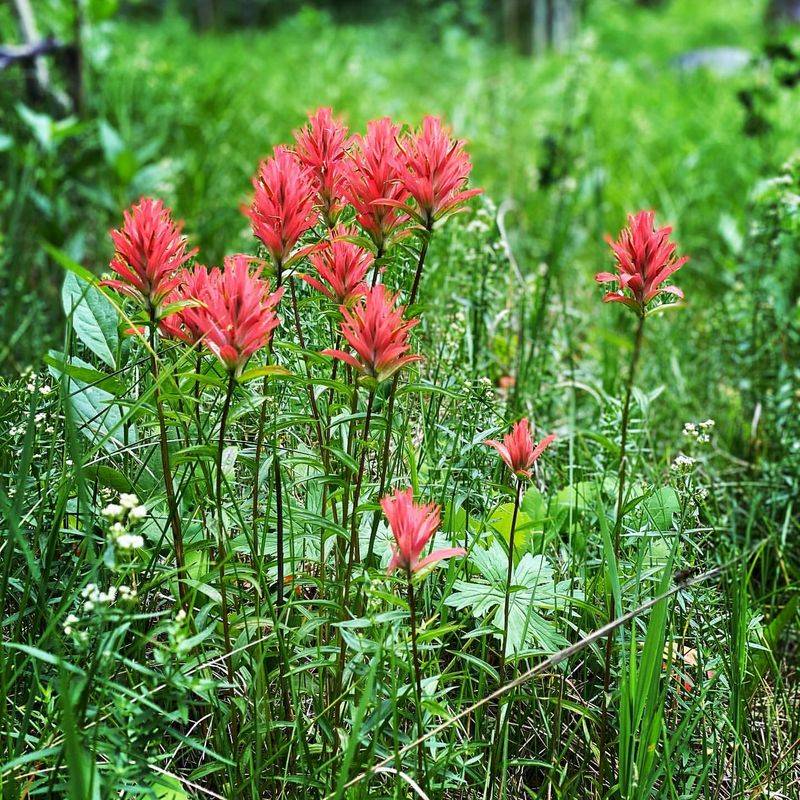Embark on an aromatic journey through the United States as we explore the incredible world of native herbs, state by state. Each herb tells its own unique story, rooted in rich cultural traditions and natural wonders. Whether you’re a culinary enthusiast, herbalist, or simply curious about nature’s bounty, this exploration is sure to captivate your senses and ignite your imagination. From the sunlit fields of California to the woody hills of Vermont, these herbs are not just plants but living history, waiting to be discovered. Let’s celebrate the diversity and beauty of America’s native herbs!
1. Alabama: Black Cohosh
In the heart of Alabama’s dense woodlands, the Black Cohosh stands proud, a towering herb with a history as rich as its surroundings. Known for its tall, white flower spikes, this herb has been cherished by Native American communities for centuries. Not just a pretty plant, its roots have been traditionally used to soothe a variety of ailments.
Imagine walking through Alabama’s forests, the air filled with the scent of earth and growth, and stumbling upon this historical gem. Black Cohosh is more than just an herb; it’s a piece of cultural heritage, still potent in its traditional uses today.
2. Alaska: Fireweed
Alaska’s landscapes are as rugged as they are beautiful, and in this wilderness, Fireweed blooms brightly. Its pink flowers light up the landscape, signaling resilience and beauty in the harshest of climates. Not merely a sight for sore eyes, Fireweed offers edible shoots and leaves that are a delight in local cuisines.
Picture this native beauty standing tall against the backdrop of Alaskan mountains and clear waters. Fireweed isn’t just a survivor; it’s a culinary and cultural treasure, offering both sustenance and a reminder of nature’s incredible ability to thrive against the odds.
3. Arizona: Desert Lavender
In the arid expanses of Arizona, the Desert Lavender thrives, bringing a splash of color to the sun-scorched terrain. Its aromatic purple blooms are a favorite not only for their beauty but also for their soothing qualities. Traditionally used to make calming teas and perfumes, this herb embodies tranquility.
Visualize walking through the desert, the scent of lavender guiding you to these hardy bushes. Desert Lavender isn’t just about aesthetic appeal; it’s a reminder of peace and serenity amidst the harshness of desert life. Let its fragrance transport you to a place of calm.
4. Arkansas: Wild Bergamot
Arkansas meadows come alive with the vibrant blooms of Wild Bergamot, a plant that attracts both pollinators and herbal enthusiasts alike. With its striking purple flowers, this herb is not only visually captivating but also boasts a rich history in herbal medicine.
Imagine a warm Arkansas day with Wild Bergamot flowers swaying gently in the breeze. Known for its uses in teas and natural remedies, this herb is a testament to the healing power of nature. Embrace the allure of Wild Bergamot and its potential to enhance well-being and biodiversity.
5. California: California Poppy
California’s hills are awash with the brilliant orange of the California Poppy, the state flower that captures hearts each spring. This vibrant herb isn’t just a symbol of beauty; it’s revered for its calming properties, often used to create soothing teas and tinctures.
Picture a landscape dominated by these cheerful poppies, their petals glowing under the Californian sun. The California Poppy stands as a testament to resilience and grace, thriving in varied climates and offering both visual splendor and gentle relaxation to all who encounter it.
6. Colorado: Rocky Mountain Bee Plant
In Colorado’s majestic mountains, the Rocky Mountain Bee Plant flourishes, its pink-purple blooms a beacon for bees and butterflies. This striking herb is celebrated not just for its beauty but also for its role in supporting pollinator populations. Its seeds and leaves have been used traditionally in cooking and medicine.
Imagine the sight of these vibrant plants humming with life, nestled in the heart of Colorado’s rugged terrain. The Rocky Mountain Bee Plant is more than just an herb; it’s a vital part of the ecosystem, playing a crucial role in maintaining biodiversity and ecological balance.
7. Connecticut: Witch Hazel
Connecticut’s woodlands are home to the distinctive Witch Hazel, a shrub known for its peculiar yellow blossoms and medicinal properties. A staple in herbal remedies, this plant has been used for centuries to treat skin ailments and inflammation.
Envision a crisp autumn day, where you stumble upon this unique shrub in full bloom, its flowers bright against the forest backdrop. Witch Hazel isn’t just a plant; it’s a testament to nature’s pharmacy, providing soothing relief and a splash of color during the fall. Celebrate its healing legacy and enduring charm.
8. Delaware: Sweet Golden Rod
Sweet Golden Rod, native to Delaware, is a vibrant and hardy plant known for its bright yellow flowers. Blooming in late summer, it decorates fields and roadsides with its cheery presence. This perennial herb is part of the aster family, bringing a splash of sunshine wherever it grows.
Historically, Sweet Golden Rod has been used for its medicinal properties, particularly in teas to aid digestion and soothe colds. Its distinct aroma and flavor also make it a popular choice for herbalists looking to create natural remedies. The plant thrives in well-drained soil and full sunlight, making it a resilient addition to garden landscapes.
Aside from its medicinal uses, Sweet Golden Rod is valued for attracting pollinators like bees and butterflies, supporting local ecosystems. Gardeners appreciate its low maintenance nature, and it’s often included in native plant gardens to promote biodiversity.
9. Florida: Saw Palmetto
The Florida Everglades are home to the resilient Saw Palmetto, an herb that stands out with its fan-shaped leaves and historical significance. Used by Native Americans for its nutritional and medicinal properties, this plant remains a cornerstone in herbal medicine.
Imagine navigating the swampy landscape, where Saw Palmetto thrives, offering both shade and sustenance. This herb is more than a plant; it’s a symbol of resilience and life in the face of adversity. Discover the enduring power of Saw Palmetto and its vital role in Florida’s natural heritage.
10. Georgia: Passionflower
Georgia’s gardens are adorned with the exotic beauty of Passionflower, a herb that captivates with its intricate petals and vibrant hues. Known for its calming effects, this plant is a favorite in herbal teas designed to soothe and relax.
Imagine a garden filled with the mesmerizing blooms of Passionflower, each flower a work of art in its own right. This herb isn’t just about aesthetics; it’s about tranquility and peace, offering a natural escape from the hustle and bustle of everyday life. Let Passionflower’s charm and serenity envelop you.
11. Hawaii: Noni
In the lush landscapes of Hawaii, the Noni tree thrives, its glossy leaves and distinctive bumpy fruits a common sight. This tropical herb is renowned for its health benefits, often used in traditional Hawaiian medicine to boost immunity and aid digestion.
Picture the Noni tree standing proudly against a tropical beach backdrop, its fruits offering a natural remedy and a taste of island life. This herb is not just a plant; it’s a vital part of Hawaiian culture and wellness, celebrated for its healing properties and its connection to the land and people.
12. Idaho: Yarrow
In Idaho’s rolling hills, Yarrow spreads its feathery leaves and white flower clusters, a staple in both the wild and home gardens. Known for its healing properties, this herb is revered for its ability to stop bleeding and aid in wound healing.
Imagine the sight of Yarrow dotting the landscape, its delicate blooms a testament to nature’s resilience. This herb is more than just a medicinal plant; it’s a symbol of strength and healing, offering natural remedies that have been trusted for generations. Embrace Yarrow’s enduring legacy and healing power.
13. Illinois: Prairie Dropseed
In the prairies of Illinois, the graceful Prairie Dropseed stands tall, its delicate seed heads swaying gently in the breeze. This native grass is not only beautiful but also plays a crucial role in prairie ecosystems, providing habitat and food for wildlife.
Imagine walking through a field of Prairie Dropseed, the air filled with its subtle fragrance and the sound of rustling leaves. This grass is more than just a plant; it’s a lifeline for many species, offering a glimpse into the interconnectedness of nature. Celebrate the elegance and ecological importance of Prairie Dropseed.
14. Indiana: Goldenseal
Indiana’s forests are home to the elusive Goldenseal, a plant treasured for its medicinal roots. With broad green leaves and small white flowers, this herb has been a staple in traditional medicine, especially for its antibacterial and anti-inflammatory properties.
Picture the dense forest undergrowth, where Goldenseal plants peek through, offering a natural remedy and a touch of wilderness. This herb is not just about healing; it’s about connection to the earth and its ancient wisdom. Discover the magic of Goldenseal and its role in traditional herbal practices.
15. Iowa: Wild Quinine
In the fertile prairies of Iowa, Wild Quinine stands as a beacon of resilience and natural beauty. With clusters of white flowers, this herb is cherished for its medicinal uses, particularly in treating fevers and digestive issues.
Imagine a prairie landscape dotted with these striking plants, each one a testament to the healing power of nature. Wild Quinine is more than just an herb; it’s part of the prairie legacy, offering a glimpse into the rich tapestry of life that thrives in these open spaces. Embrace its beauty and medicinal significance.
16. Kansas: Purple Coneflower
Kansas fields burst with color as the Purple Coneflower blooms, its vibrant petals a favorite among pollinators and gardeners alike. Known for its immune-boosting properties, this herb is a cornerstone of natural remedies.
Imagine the sight of Purple Coneflowers swaying in the summer breeze, their beauty matched only by their health benefits. This herb is not just a pretty flower; it’s a powerful ally in wellness, celebrated for its ability to support and enhance the immune system. Discover the vibrant charm of the Purple Coneflower and its role in holistic health.
17. Kentucky: Bloodroot
Kentucky’s woodlands are home to the striking Bloodroot, a plant known for its vivid white flowers and medicinal roots. Traditionally used to treat respiratory ailments, this herb is both beautiful and beneficial.
Picture the forest floor, where Bloodroot flowers stand out with their stark contrast against the greenery. This plant is more than just an herbal remedy; it’s a symbol of nature’s artistry and healing power. Explore the allure of Bloodroot and its role in traditional medicine, offering a natural solution to common health concerns.
18. Louisiana: Pleurisy Root
Pleurisy root is a striking perennial herb known for its vivid orange blossoms. It flourishes in sunny meadows and is a common sight in the eastern United States. Historically, its roots have been used to alleviate respiratory issues.
The plant’s name derives from its traditional use in treating pleurisy and other lung ailments. Native Americans valued it for its medicinal properties and ornamental beauty. Today, it is appreciated not only for its health benefits but also for attracting butterflies, particularly the monarch.
19. Maine: Wintergreen
Maine’s forests are dotted with Wintergreen, a small plant with glossy leaves and bright red berries. Known for its refreshing scent and flavor, this herb is commonly used in teas and medicinal salves.
Picture a forest floor carpeted with Wintergreen, its vibrant berries standing out amidst the foliage. This plant is more than just an aromatic delight; it’s a touch of nature’s own refreshment and healing. Discover the invigorating world of Wintergreen and its place in both culinary and medicinal traditions. Let its scent transport you to a world of natural wonders.
20. Maryland: Spicebush
In the woodlands of Maryland, the Spicebush thrives, lighting up the undergrowth with its yellow flowers and red berries. This aromatic shrub is valued not only for its beauty but also for its use in teas and culinary dishes.
Imagine walking through a Maryland forest, the air filled with the spicy aroma of Spicebush. This plant offers more than just visual appeal; it’s a flavorful addition to nature’s pantry, celebrated for its versatility and unique taste. Embrace the vibrant charm of Spicebush and its role in enriching both environment and cuisine.
21. Massachusetts: Bayberry
Along the Massachusetts coast, the Bayberry shrub stands resilient, its waxy leaves and berries a common sight against the backdrop of the sea. Known for its aromatic qualities, Bayberry is traditionally used in candles and medicinal applications.
Picture the coastal landscape, where Bayberry shrubs sway gently in the ocean breeze, their scent a reminder of the sea and its bounty. This plant is more than just a coastal fixture; it’s a piece of maritime heritage, offering both practical uses and a touch of natural beauty. Discover the enduring allure of Bayberry and its place in coastal traditions.
22. Michigan: Wild Ginger
In Michigan’s diverse forests, Wild Ginger spreads its heart-shaped leaves across the forest floor, a plant cherished for its aromatic roots. Used by Native Americans as a spice and medicine, this herb is a flavorful addition to nature’s apothecary.
Imagine a forest filled with the subtle presence of Wild Ginger, its scent mingling with the earthy aromas of the woods. This plant is more than just an herbal remedy; it’s a taste of history and culture, offering both culinary delight and medicinal benefits. Explore the rich heritage of Wild Ginger and its role in traditional practices.
23. Minnesota: Wild Rice
Minnesota’s lakes are home to Wild Rice, a plant that holds a special place in the hearts and diets of the region’s native communities. This aquatic grass is not just a food source; it’s a cultural staple, celebrated for its nutritional value and historical significance.
Picture a serene lake dotted with Wild Rice, its stalks swaying in the gentle breeze. This plant is more than just a grain; it’s a connection to the land and its people, offering a taste of tradition and a reminder of the region’s rich heritage. Celebrate the legacy and sustenance of Wild Rice.
24. Mississippi: Sassafras
In Mississippi’s lush woodlands, the Sassafras tree stands out with its distinctive mitten-shaped leaves and aromatic bark. Known for its use in root beer and culinary dishes, this tree is a Southern favorite.
Picture a walk through the woods, where the scent of Sassafras fills the air, offering both olfactory delight and a hint of traditional Southern cooking. This tree is more than just an ingredient; it’s a symbol of regional flavor and cultural heritage. Embrace the multifaceted charm of Sassafras and its role in both cuisine and culture.
25. Missouri: Pawpaw
Missouri’s forests are home to the Pawpaw, a tree that bears the largest native fruit in North America. Known for its tropical flavor, this fruit is a hidden gem, celebrated for its unique taste and nutritional benefits.
Picture a walk through a Missouri forest, where Pawpaw trees offer a surprising bounty amidst the greenery. This fruit is more than just a treat; it’s a connection to the land and its natural abundance, offering a taste of the wild and a reminder of the region’s diverse flora. Discover the sweet allure of Pawpaw and its role in local traditions.
26. Montana: Bitterroot
In the rugged terrain of Montana, the Bitterroot blooms with delicate pink flowers that stand out against the harsh landscape. This resilient plant is not only beautiful but also holds cultural significance for Native American tribes.
Imagine the sight of Bitterroot flowers brightening up the rocky ground, a symbol of strength and endurance. This plant is more than just an herb; it’s a piece of cultural heritage, offering both beauty and historical importance. Celebrate the tenacity and cultural richness of Bitterroot as it continues to thrive in its natural habitat.
27. Nebraska: Prairie Sage
Nebraska’s prairies are graced with the presence of Prairie Sage, a plant with silvery leaves that shimmer in the sunlight. Known for its aromatic qualities, this herb is used in traditional remedies and cultural ceremonies.
Picture a vast prairie landscape, where the scent of Prairie Sage fills the air, offering both healing and spiritual connection. This plant is more than just an herb; it’s a link to the past and a symbol of nature’s soothing embrace. Explore the mystical allure of Prairie Sage and its role in cultural traditions and natural wellness.
28. Nevada: Creosote Bush
In Nevada’s arid deserts, the Creosote Bush stands as a symbol of resilience and survival. Its dark green leaves and yellow flowers offer a stark contrast to the barren landscape, embodying the spirit of endurance.
Imagine the desert sun beating down on the Creosote Bush, which thrives despite the harsh conditions. This plant is more than just a survivor; it’s a testament to nature’s ability to adapt and flourish. Discover the enduring beauty and ecological importance of the Creosote Bush, a true champion of the desert environment.
29. New Hampshire: Wood Sorrel
In the verdant forests of New Hampshire, Wood Sorrel carpets the forest floor, its clover-like leaves and yellow flowers a charming sight. Known for its tart flavor, this plant is often used in salads and herbal remedies.
Picture a woodland path lined with Wood Sorrel, its leaves adding a touch of green and its flowers a splash of color. This plant is more than just a culinary delight; it’s a testament to the diversity and abundance of nature’s offerings. Explore the refreshing taste and traditional uses of Wood Sorrel in this lush landscape.
30. New Jersey: Cranberry
New Jersey’s bogs are alive with the vibrant red of Cranberries, a fruit that plays a pivotal role in both the culinary world and local agriculture. Known for their tart flavor and health benefits, cranberries are a staple in holiday meals and wellness routines.
Imagine a bog filled with these jewel-like berries, each one a burst of flavor and nutrition. Cranberries are more than just a fruit; they’re a symbol of tradition and agricultural innovation. Celebrate the rich history and delicious versatility of Cranberries in New Jersey’s unique landscape.
31. New Mexico: Cota
In the deserts of New Mexico, Cota, also known as Navajo Tea, brings a splash of color with its bright yellow flowers. This herb is cherished for its refreshing taste and traditional medicinal uses.
Picture the sandy terrain dotted with Cota plants, each one a beacon of life in the arid landscape. This herb is more than just a plant; it’s a connection to cultural traditions and natural wellness. Discover the invigorating world of Cota and its role in both culinary and medicinal practices, offering a taste of the desert’s bounty.
32. New York: Blue Cohosh
In New York’s woodlands, Blue Cohosh stands as a beacon of medicinal heritage, its bluish-green leaves and yellow-green flowers a testament to nature’s pharmacy. Traditionally used for women’s health, this herb is a staple in herbal medicine.
Imagine a walk through the forest, where Blue Cohosh plants peek through the undergrowth, offering a natural remedy and a touch of wilderness. This plant is more than just an herb; it’s a symbol of healing and connection to the earth. Embrace the wisdom and beauty of Blue Cohosh in this lush, thriving environment.
33. North Carolina: Devil’s Walking Stick
In North Carolina’s forests, the Devil’s Walking Stick cuts a striking figure with its thorny stems and large compound leaves. Known for its medicinal roots and berries, this plant is both feared and revered.
Picture the dramatic silhouette of Devil’s Walking Stick against the forest backdrop, a reminder of nature’s power and complexity. This plant is more than just an herbal remedy; it’s a symbol of resilience and adaptability, offering both healing and a touch of danger. Explore the intriguing world of Devil’s Walking Stick and its place in natural and cultural traditions.
34. North Dakota: Prairie Rose
In the wide expanses of North Dakota’s prairies, the Prairie Rose blooms with delicate pink flowers, a symbol of beauty and resilience. This state flower is not only a visual delight but also holds cultural significance.
Imagine a prairie landscape dotted with Prairie Roses, their blossoms swaying gently in the breeze. This plant is more than just an ornamental; it’s a connection to the land and its natural beauty. Celebrate the charming allure and symbolic importance of the Prairie Rose in North Dakota’s rich tapestry of native flora.
35. Ohio: American Ginseng
Ohio’s forests are home to American Ginseng, a plant prized for its medicinal roots and historical significance. Known for its health-boosting properties, this herb is a cornerstone of traditional medicine.
Picture the forest undergrowth, where American Ginseng plants offer a glimpse into nature’s apothecary. This herb is more than just a remedy; it’s a symbol of healing and vitality, celebrated for its ability to enhance well-being. Discover the enduring legacy and health benefits of American Ginseng in Ohio’s diverse ecosystems.
36. Oklahoma: Indian Blanket
Oklahoma’s fields come alive with the fiery hues of Indian Blanket flowers, their red and yellow petals a favorite among pollinators and flower enthusiasts. Known for their vibrant beauty, these flowers are a symbol of summer’s warmth and vitality.
Imagine a field ablaze with Indian Blankets, each bloom a testament to the joy and energy of the season. These flowers are more than just a visual feast; they’re a celebration of nature’s artistic flair and resilience. Embrace the vibrant spirit of Indian Blanket and its role in enriching Oklahoma’s natural landscape.
37. Oregon: Camas
In Oregon’s meadows, the Camas flowers create a sea of blue, their delicate blooms a cherished sight in the springtime. This plant is not only beautiful but also holds historical significance as a food source for Native American tribes.
Imagine the sight of Camas flowers transforming a meadow into a vibrant tapestry of color. This plant is more than just an ornamental; it’s a symbol of sustenance and tradition, offering a taste of the region’s rich cultural heritage. Discover the enduring charm and historical importance of Camas in Oregon’s lush landscapes.
38. Pennsylvania: Mountain Laurel
Pennsylvania’s hillsides are adorned with Mountain Laurel, a shrub known for its stunning pink and white blossoms. This state flower is not only a visual delight but also holds cultural significance.
Picture a hillside awash with the colors of Mountain Laurel, each bloom a testament to the beauty and resilience of nature. This plant is more than just an ornamental; it’s a symbol of regional pride and natural elegance. Celebrate the captivating allure and cultural importance of Mountain Laurel in Pennsylvania’s diverse landscapes.
39. Rhode Island: Marsh Mallow
In the wetlands of Rhode Island, Marsh Mallow plants thrive, their pink flowers a beacon of beauty in the marshy landscape. Known for their soothing properties, these plants are used in traditional remedies for coughs and inflammation.
Imagine a wetland filled with the soft hues of Marsh Mallow, each plant offering a touch of nature’s healing embrace. This herb is more than just a pretty flower; it’s a source of comfort and wellness, celebrated for its gentle medicinal benefits. Discover the soothing charm and historical uses of Marsh Mallow in Rhode Island’s natural habitats.
40. South Carolina: Yellow Jessamine
In South Carolina, the Yellow Jessamine vines grace gardens and wild areas with their fragrant yellow flowers. This state flower is a symbol of grace and elegance, known for its intoxicating aroma and striking beauty.
Picture a garden filled with the glow of Yellow Jessamine, each vine a testament to the charm and allure of Southern flora. This plant is more than just an ornamental; it’s a celebration of nature’s artistry and fragrance. Embrace the enchanting beauty and cultural significance of Yellow Jessamine in South Carolina’s lush landscapes.
41. South Dakota: Echinacea
South Dakota’s prairies are home to Echinacea, a plant known for its striking pink-purple flowers and medicinal roots. This herb is a staple in natural remedies, celebrated for its immune-boosting properties.
Imagine a prairie landscape dotted with Echinacea, each plant a beacon of health and vitality. This herb is more than just a beautiful flower; it’s a symbol of wellness and resilience, offering a natural solution to common ailments. Discover the enduring appeal and health benefits of Echinacea in South Dakota’s vast and vibrant landscapes.
42. Tennessee: Trillium
In Tennessee’s woodlands, Trillium adds a touch of elegance with its three-petaled flowers and lush green leaves. This plant holds cultural significance and is cherished for its beauty and medicinal uses.
Imagine the forest floor adorned with Trillium, each flower a symbol of grace and natural harmony. This plant is more than just an ornamental; it’s a connection to cultural traditions and a testament to nature’s elegance. Celebrate the timeless beauty and historical importance of Trillium in Tennessee’s rich and diverse ecosystems.
43. Texas: Prickly Pear
In the vast deserts of Texas, the Prickly Pear cactus stands resilient, its flat green pads and vibrant yellow flowers a striking contrast to the arid landscape. Known for its edible fruits and pads, this cactus is a staple in Southwestern cuisine.
Picture a desert landscape where Prickly Pear cacti thrive, offering both visual beauty and culinary delights. This plant is more than just a survivor; it’s a symbol of adaptability and nourishment, celebrated for its versatility and flavor. Embrace the unique charm and culinary contributions of Prickly Pear in Texas’s rugged terrain.
44. Utah: Sego Lily
Utah’s meadows are graced with the Sego Lily, a delicate flower known for its white petals with yellow centers. This state flower is cherished for its beauty and historical significance as a food source for Native American tribes.
Imagine a meadow dotted with Sego Lilies, each bloom a symbol of sustenance and grace. This plant is more than just an ornamental; it’s a testament to the resilience and resourcefulness of those who lived off the land. Discover the enduring beauty and cultural importance of the Sego Lily in Utah’s picturesque landscapes.
45. Vermont: Red Clover
In Vermont’s lush fields, Red Clover blooms with vibrant purple flowers, a plant cherished for its beauty and health benefits. Known for its role in herbal medicine, this herb is celebrated for its ability to support women’s health.
Picture a field awash with the color of Red Clover, each flower a testament to the healing power of nature. This plant is more than just a pretty bloom; it’s a symbol of wellness and natural beauty, offering a touch of herbal wisdom. Embrace the vibrant charm and medicinal significance of Red Clover in Vermont’s serene landscapes.
46. Virginia: American Holly
In Virginia’s woodlands, American Holly stands as a symbol of winter beauty, its glossy green leaves and bright red berries offering a festive touch to the landscape. Known for its ornamental appeal, this tree is also a part of holiday traditions.
Imagine a winter scene brightened by the sight of American Holly, each tree a reminder of the season’s charm and warmth. This plant is more than just a decorative element; it’s a connection to cultural traditions and natural elegance. Celebrate the enduring allure and festive significance of American Holly in Virginia’s diverse ecosystems.
47. Washington: Western Red Cedar
In the temperate rainforests of Washington, the Western Red Cedar reigns supreme, its towering presence a vital part of the ecosystem. Known for its durable wood and cultural significance, this tree is cherished by local tribes.
Imagine walking through a forest dominated by these majestic trees, their scent and presence a reminder of nature’s grandeur. The Western Red Cedar is more than just a tree; it’s a symbol of strength and life, offering shelter and resources. Discover the towering beauty and cultural importance of Western Red Cedar in Washington’s lush landscapes.
48. West Virginia: Ginseng
West Virginia’s woodlands are home to Ginseng, a plant known for its health-boosting roots and historical significance. This herb is a staple in traditional medicine, celebrated for its vitality-enhancing properties.
Picture the forest undergrowth filled with Ginseng plants, each one a testament to nature’s healing power. This herb is more than just a remedy; it’s a connection to the earth and its ancient wisdom, offering a natural boost to health and well-being. Embrace the legacy and medicinal benefits of Ginseng in West Virginia’s diverse ecosystems.
49. Wisconsin: Black-Eyed Susan
In Wisconsin’s meadows, Black-Eyed Susan flowers stand out with their bright yellow petals and dark centers, a symbol of natural beauty and resilience. This plant is not only cherished for its visual appeal but also plays a role in supporting pollinators.
Imagine a meadow filled with the cheerful blooms of Black-Eyed Susan, each one a beacon of life and vibrancy. This flower is more than just an ornamental; it’s a vital part of the ecosystem, offering beauty and support to the natural world. Celebrate the sunny charm and ecological importance of Black-Eyed Susan in Wisconsin’s landscapes.
50. Wyoming: Indian Paintbrush
In Wyoming’s rugged landscapes, Indian Paintbrush blooms with fiery red-orange flowers, a striking contrast to the rocky terrain. This state flower is not only a visual delight but also holds cultural significance.
Imagine the sight of Indian Paintbrush brightening up the landscape, each bloom a symbol of resilience and beauty. This plant is more than just a colorful addition; it’s a connection to the land and its natural wonders. Celebrate the vibrant charm and cultural importance of Indian Paintbrush in Wyoming’s majestic scenery.

